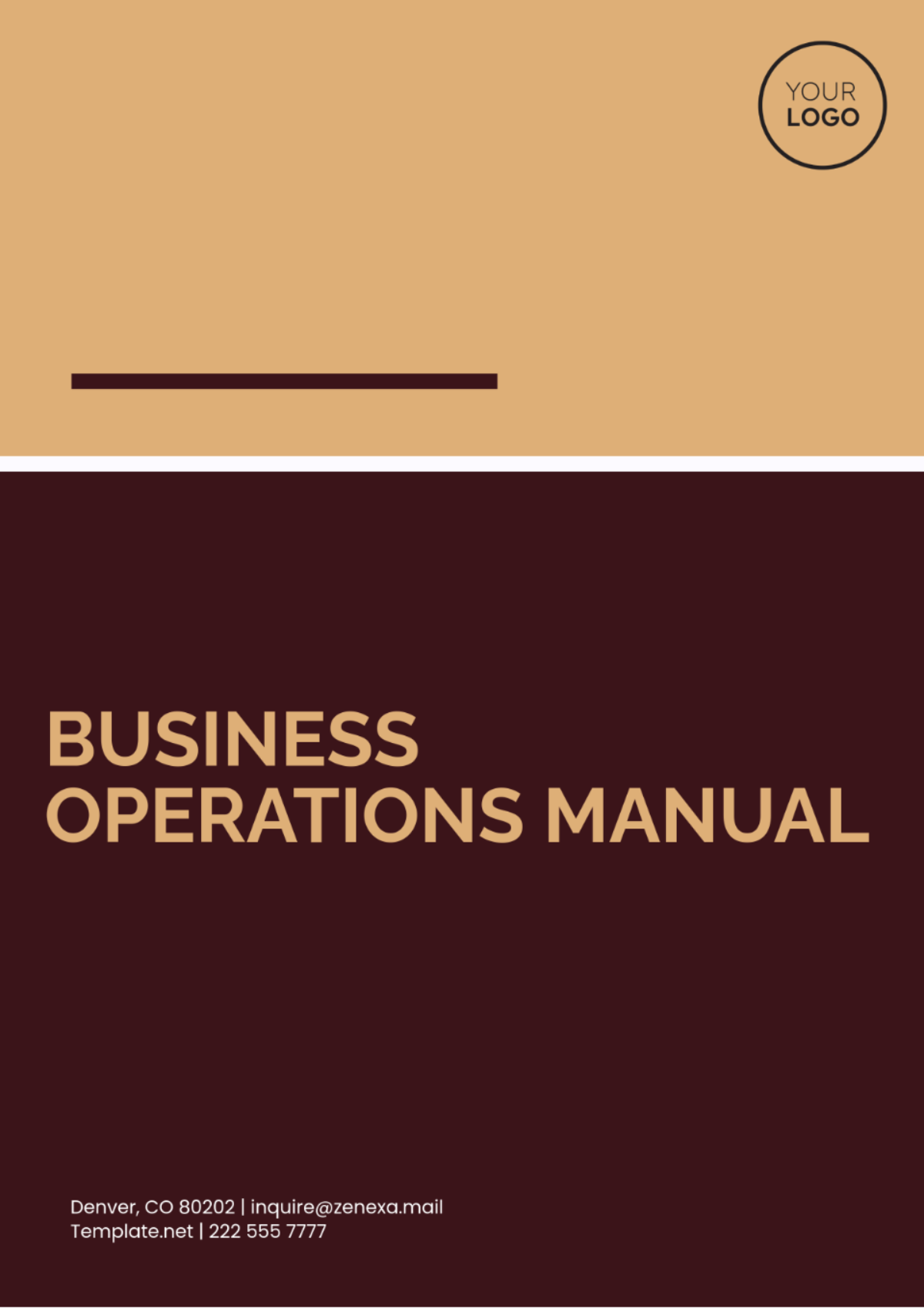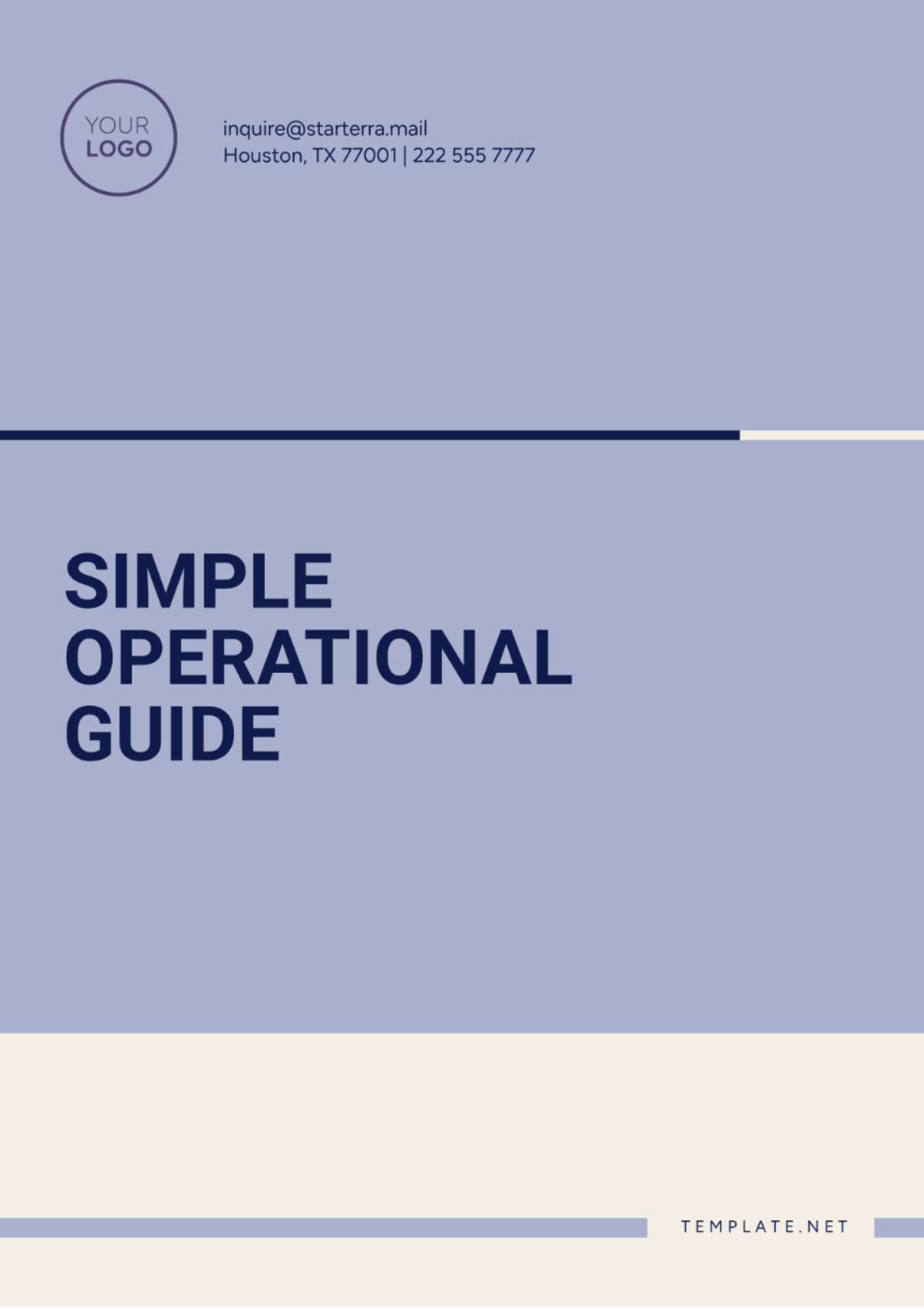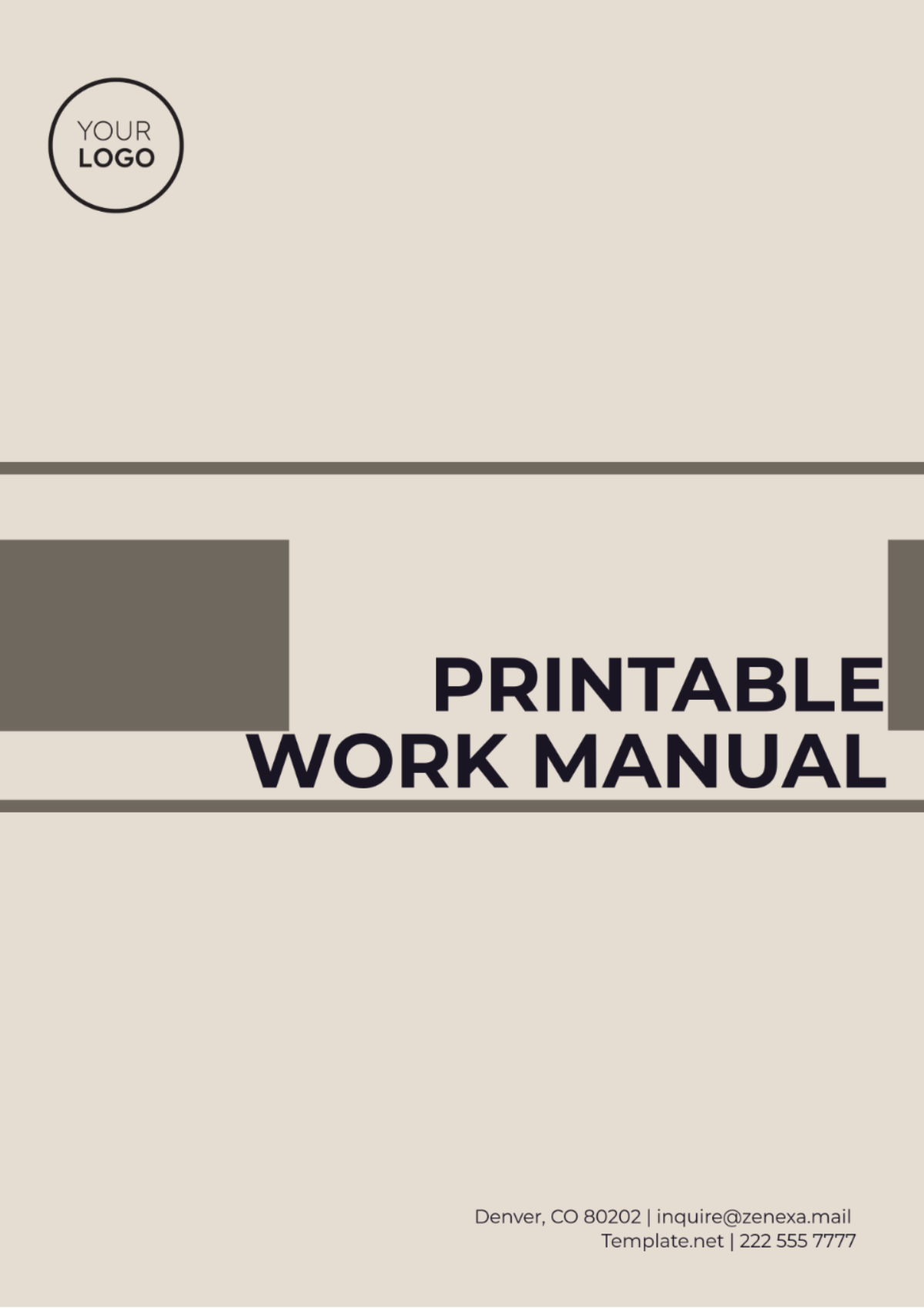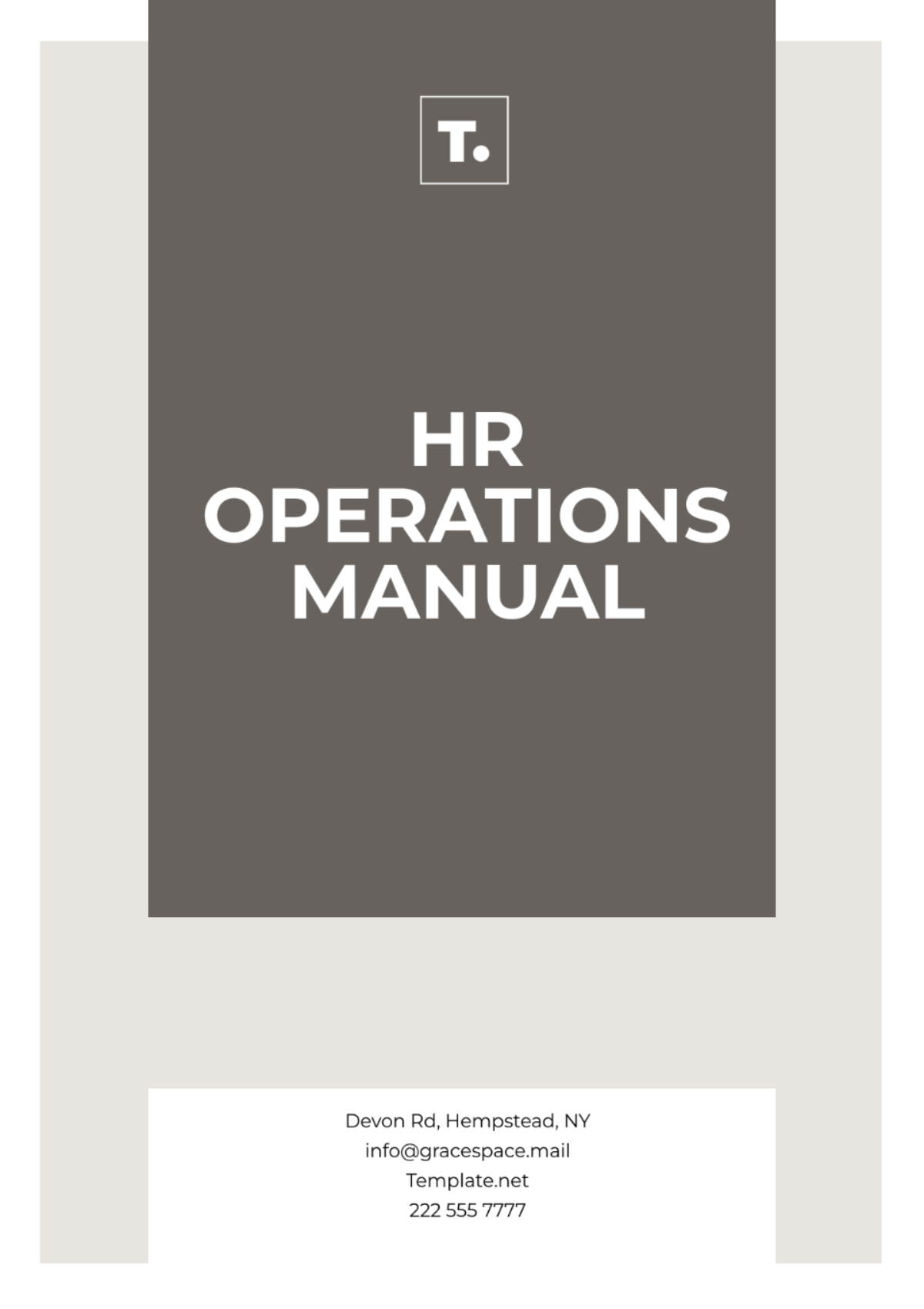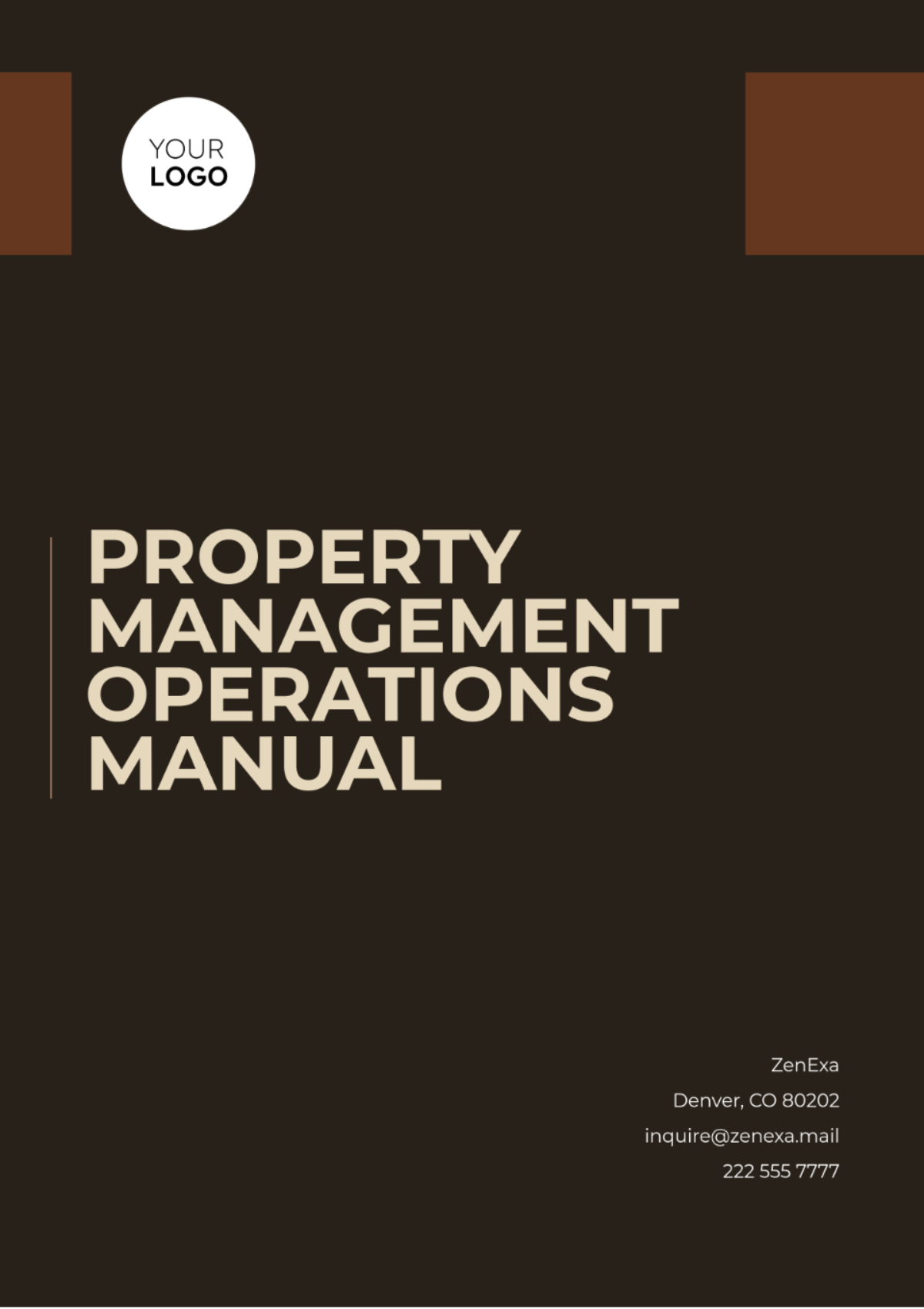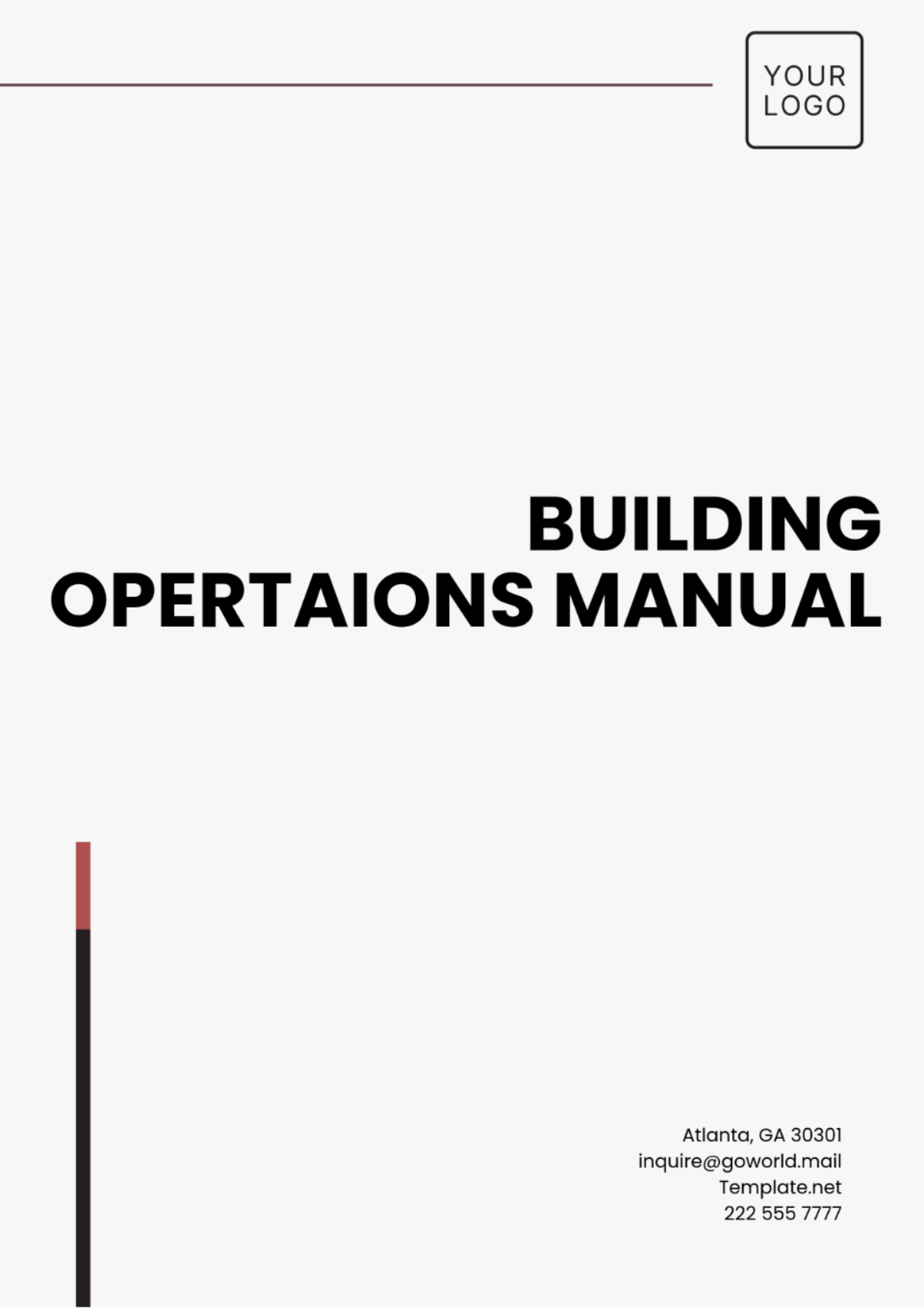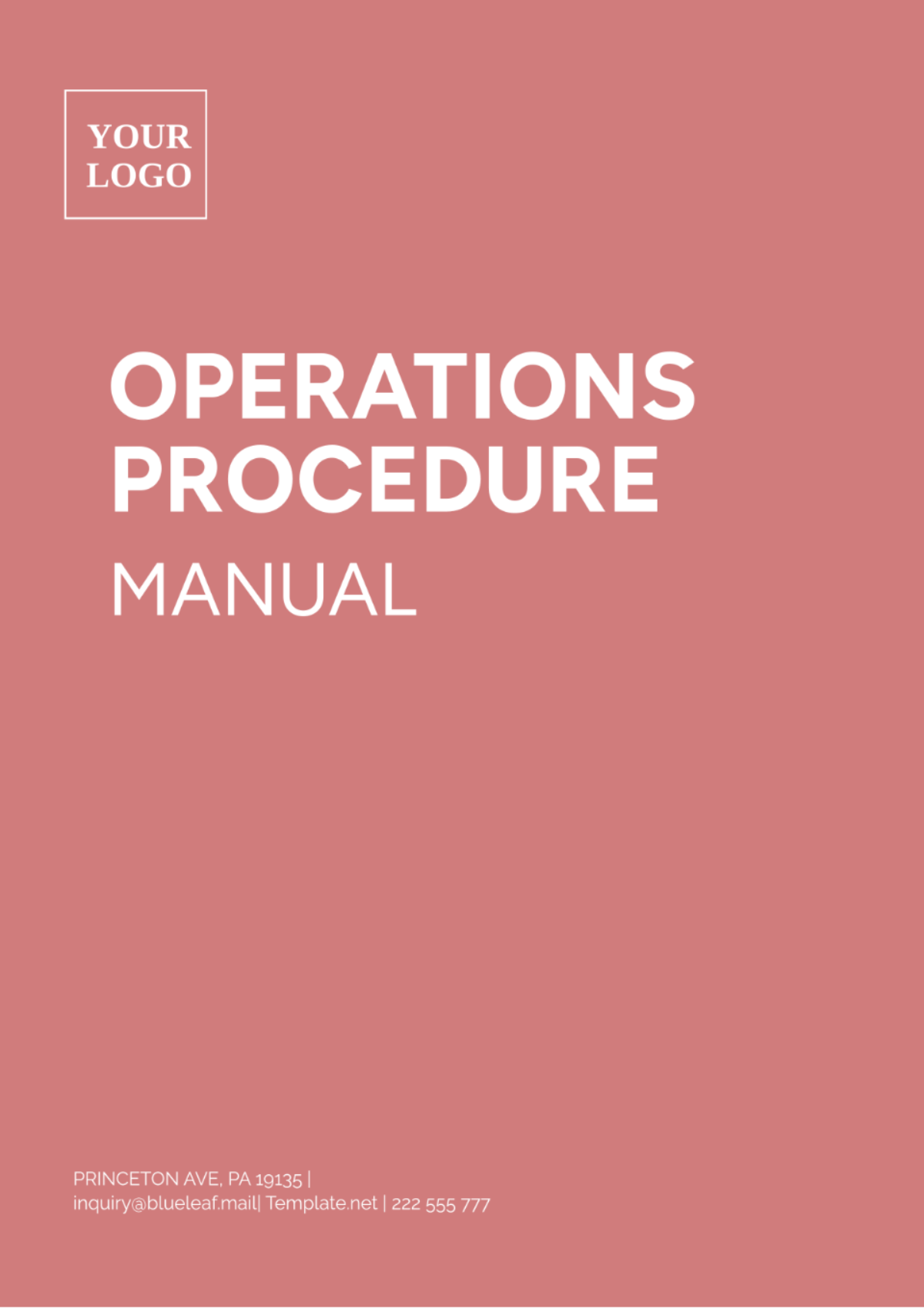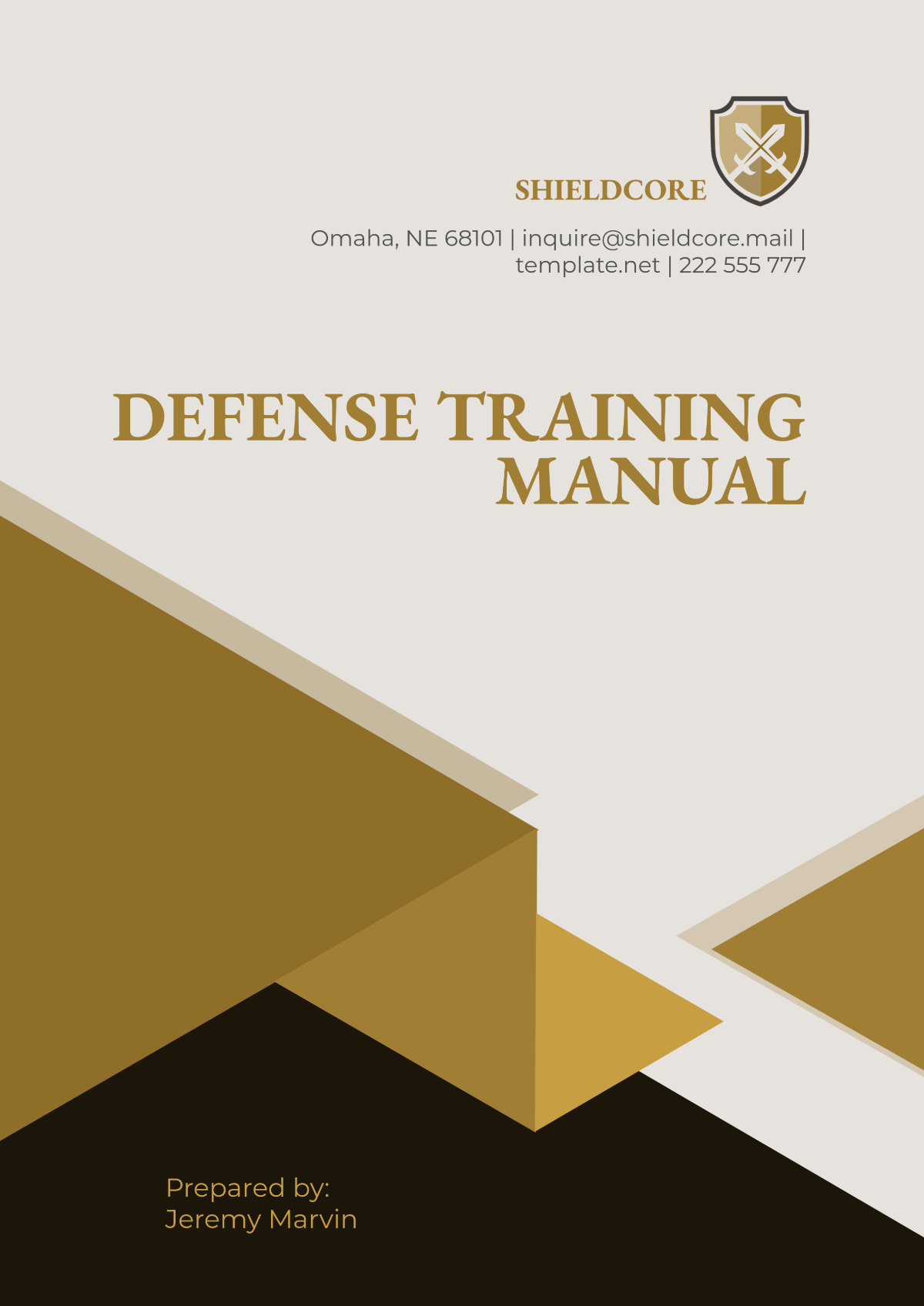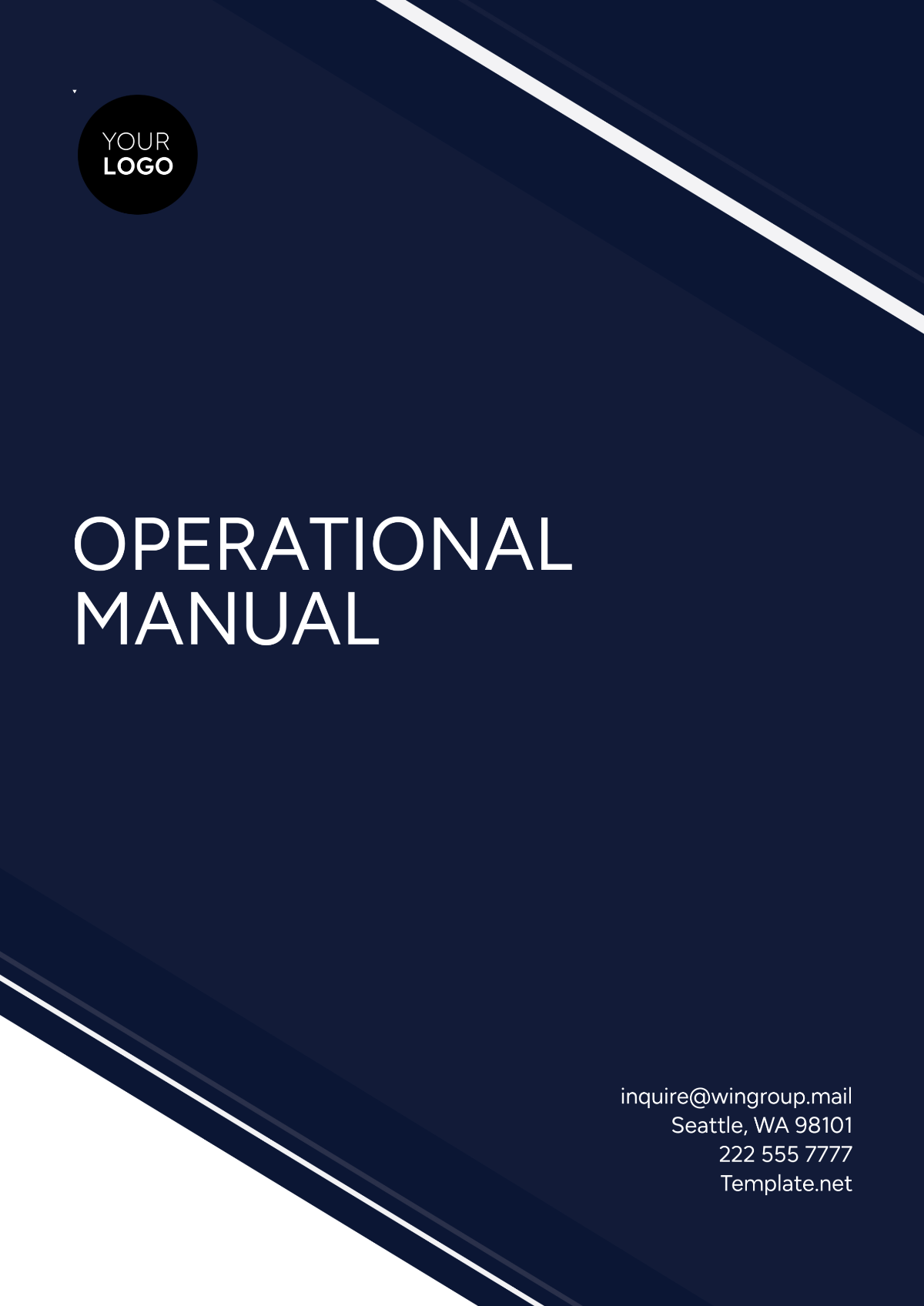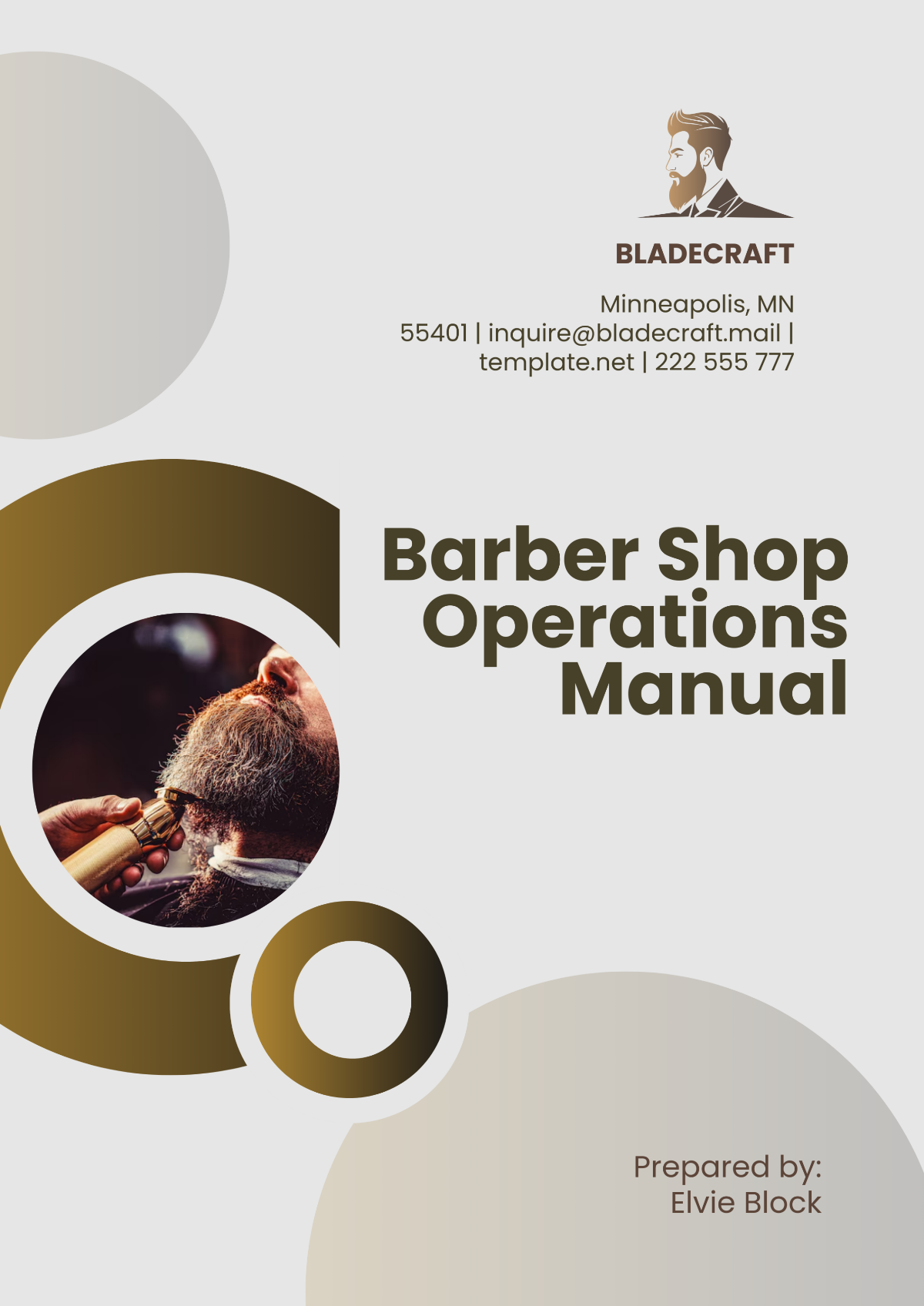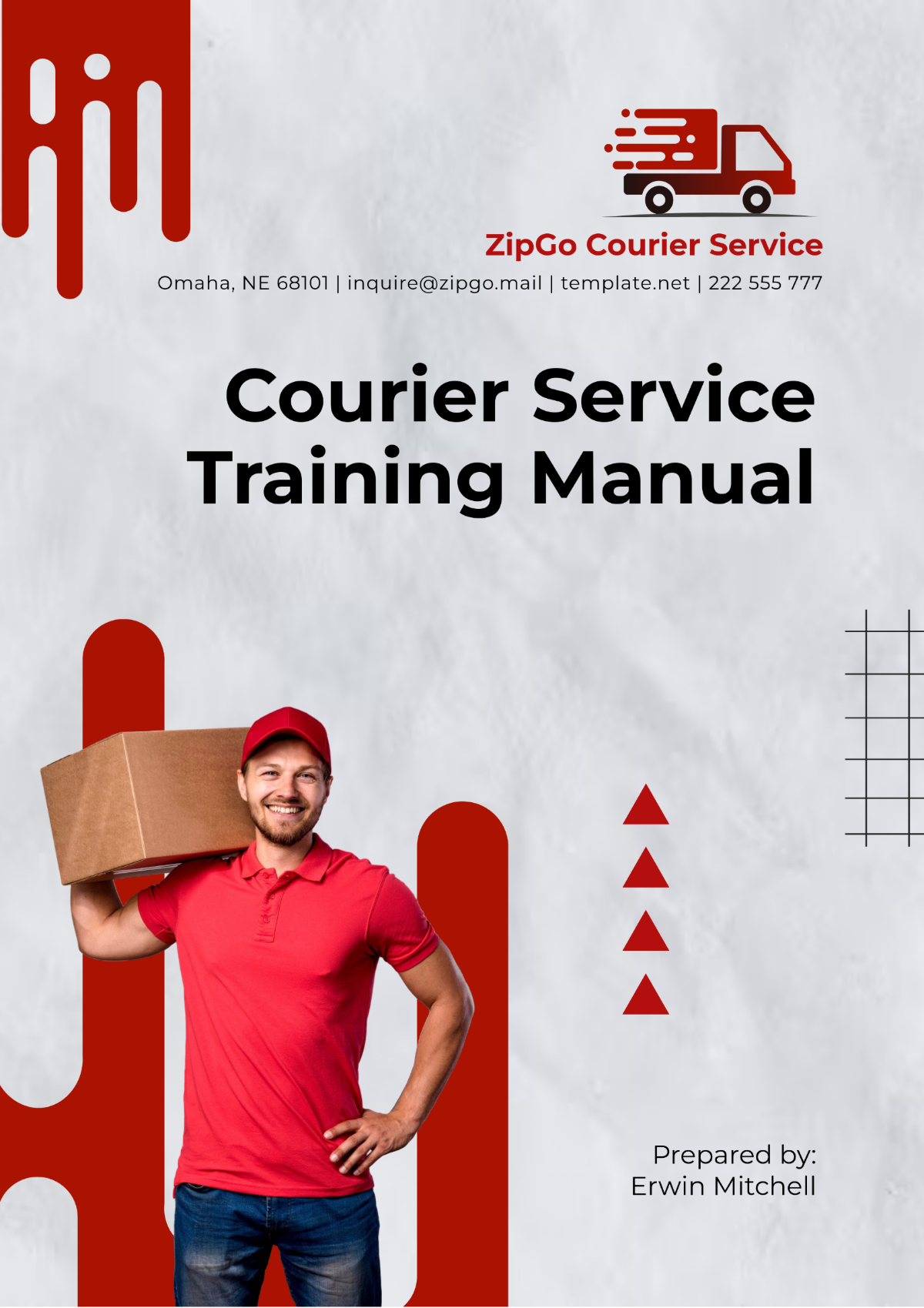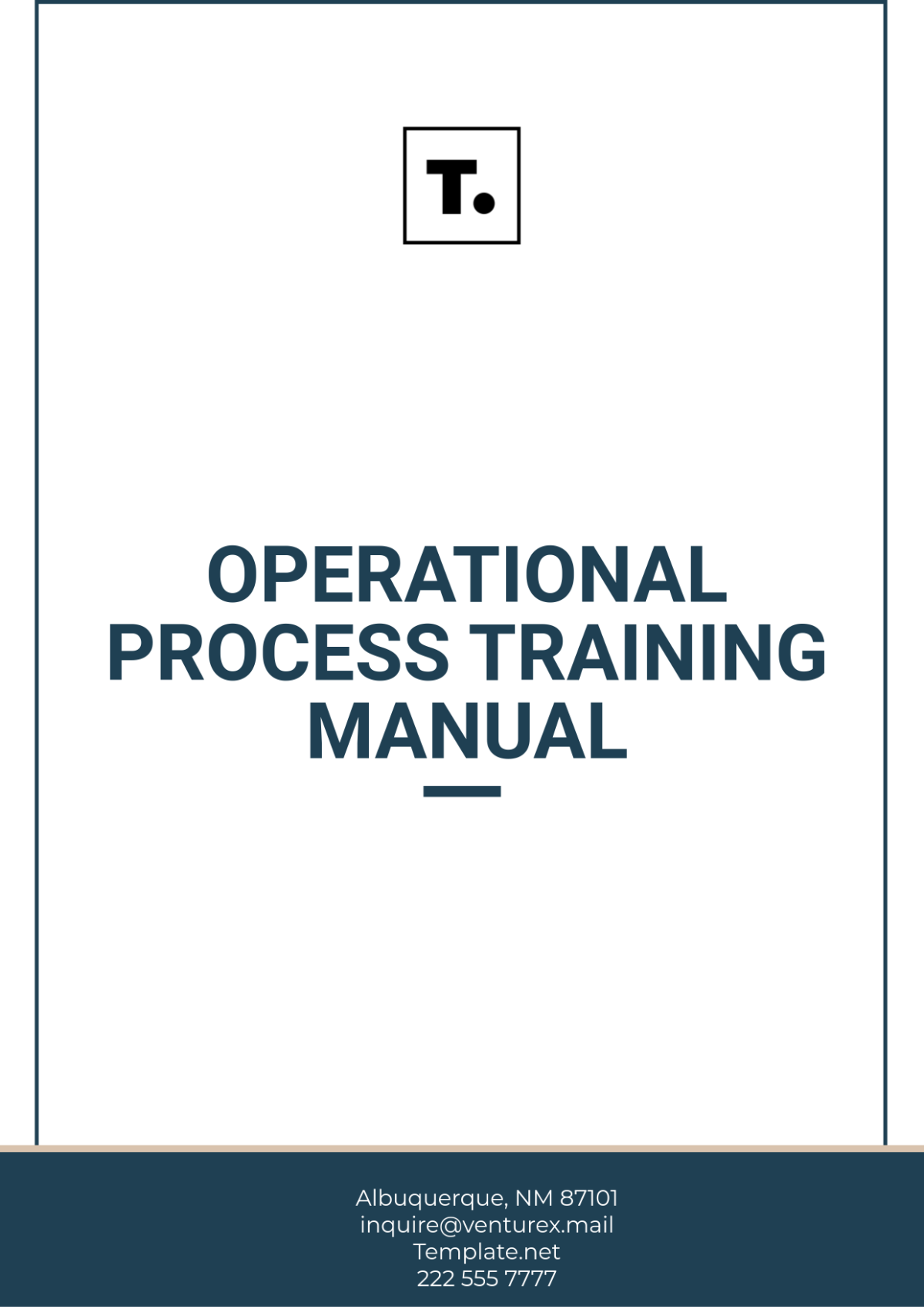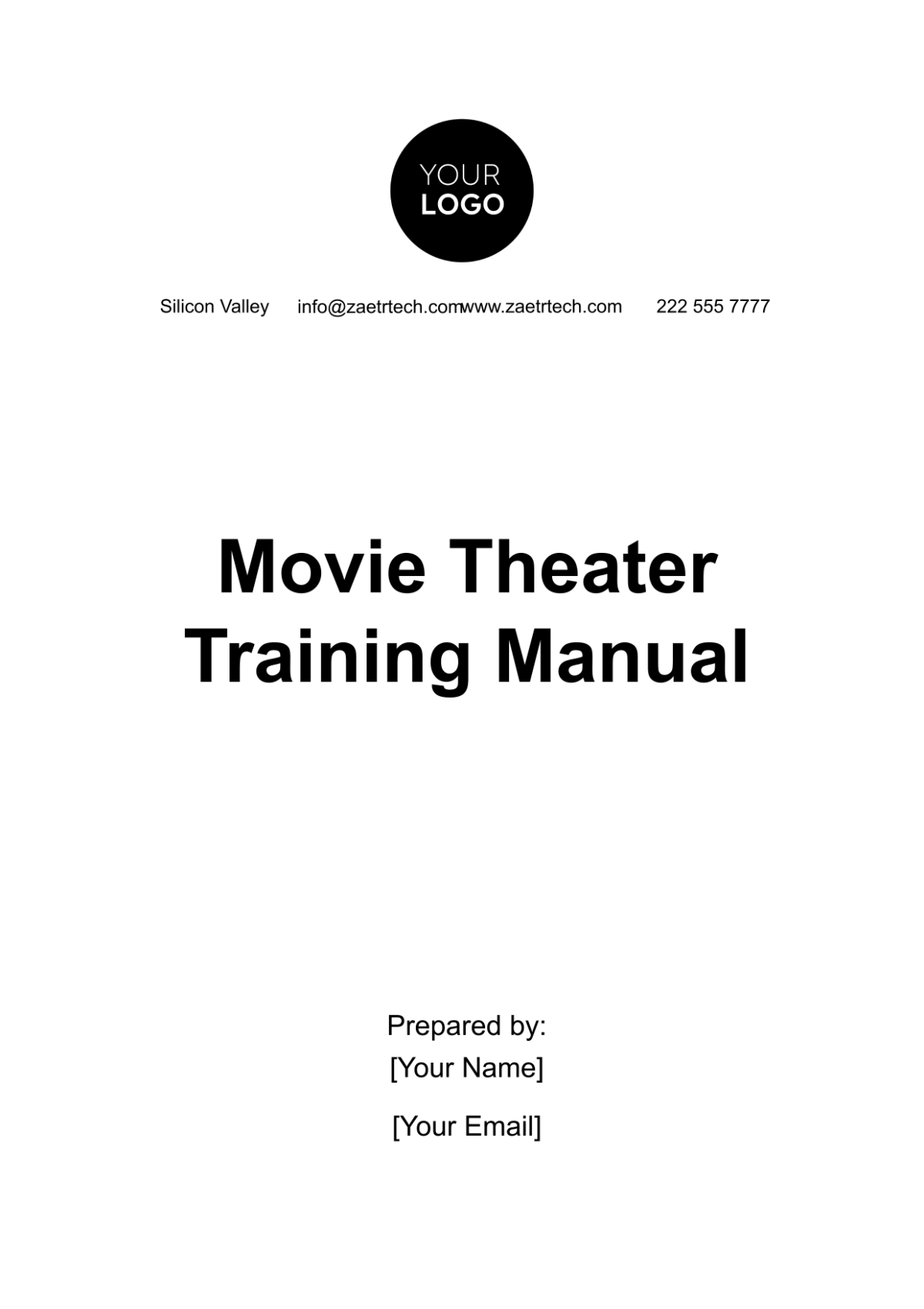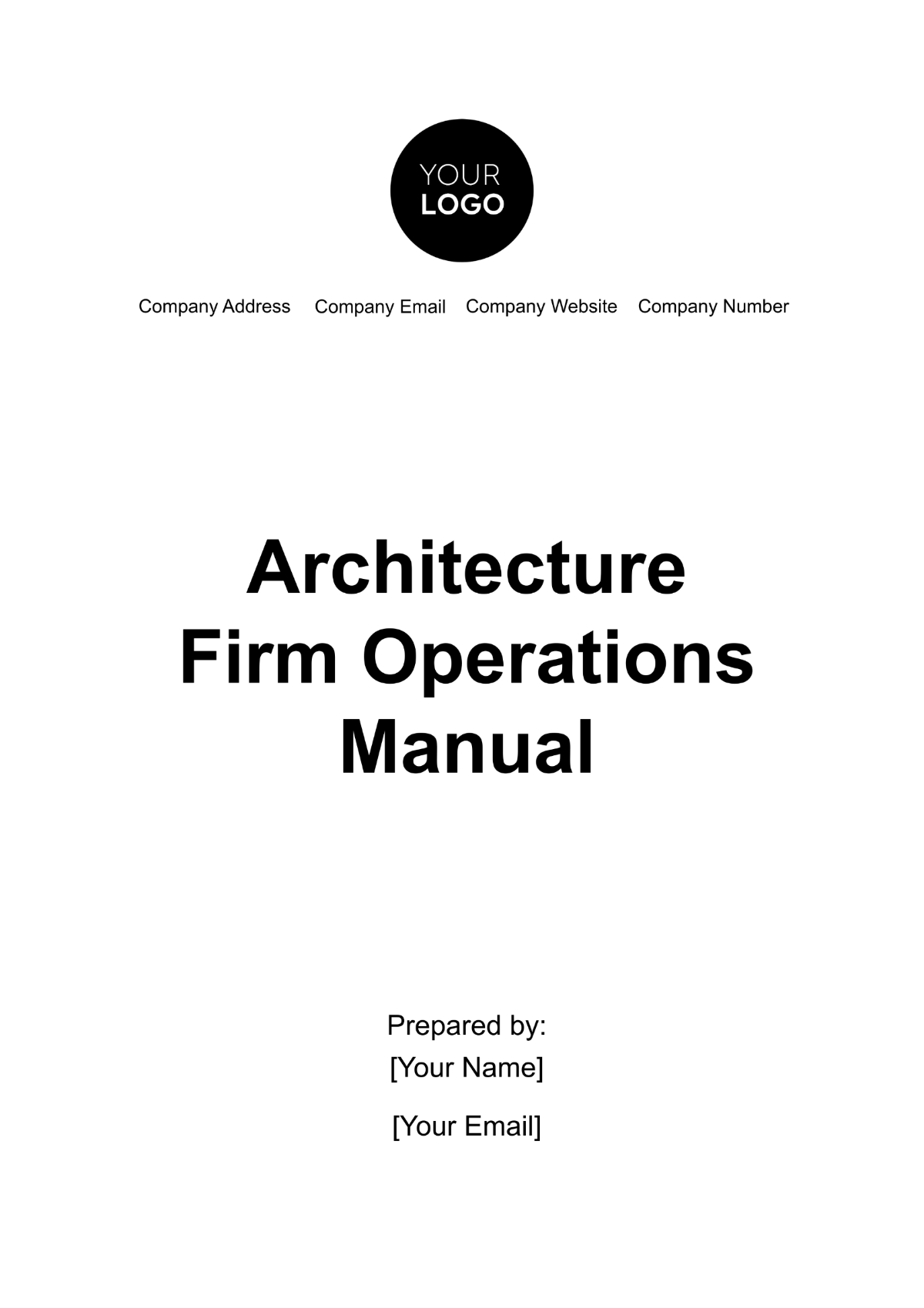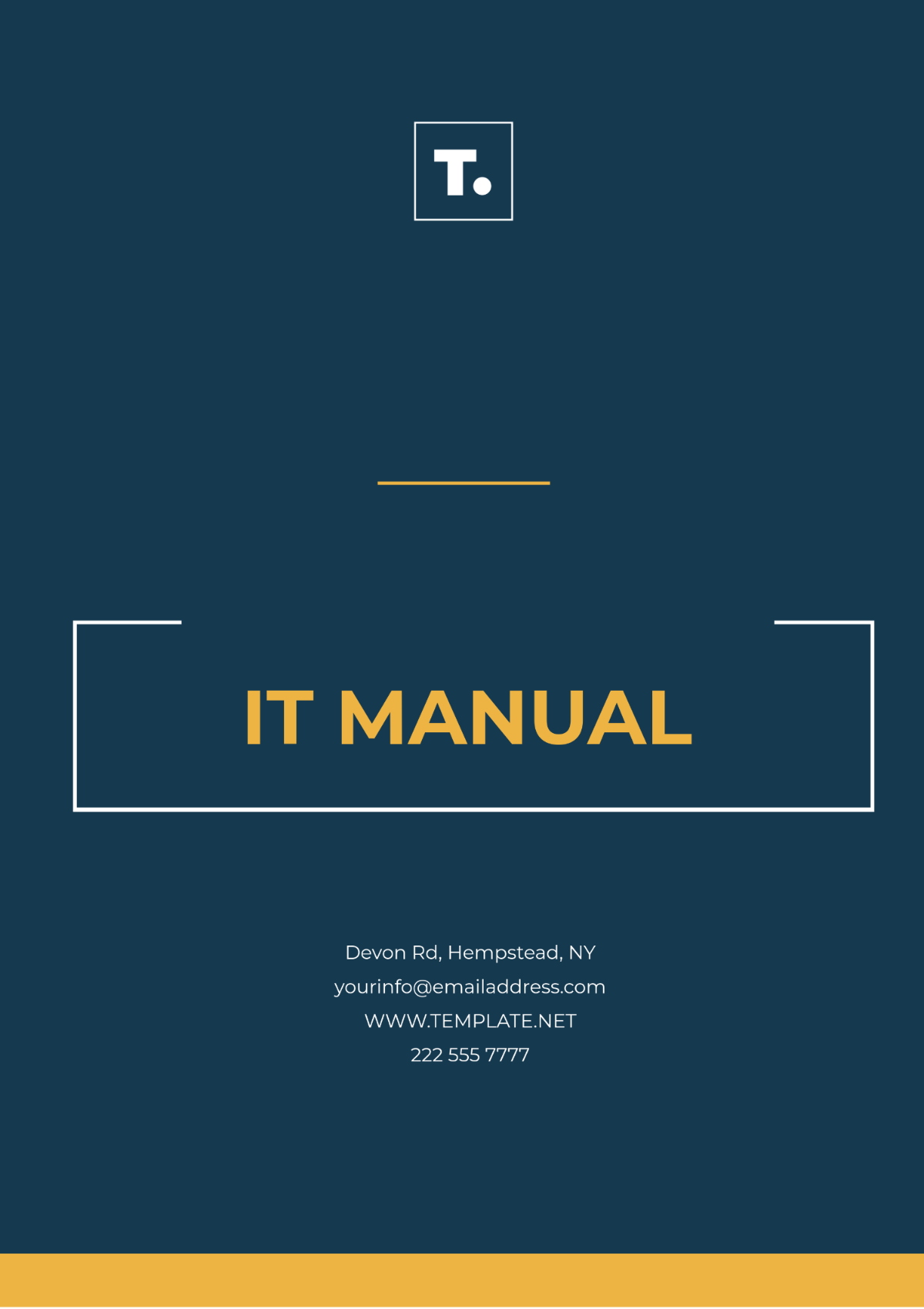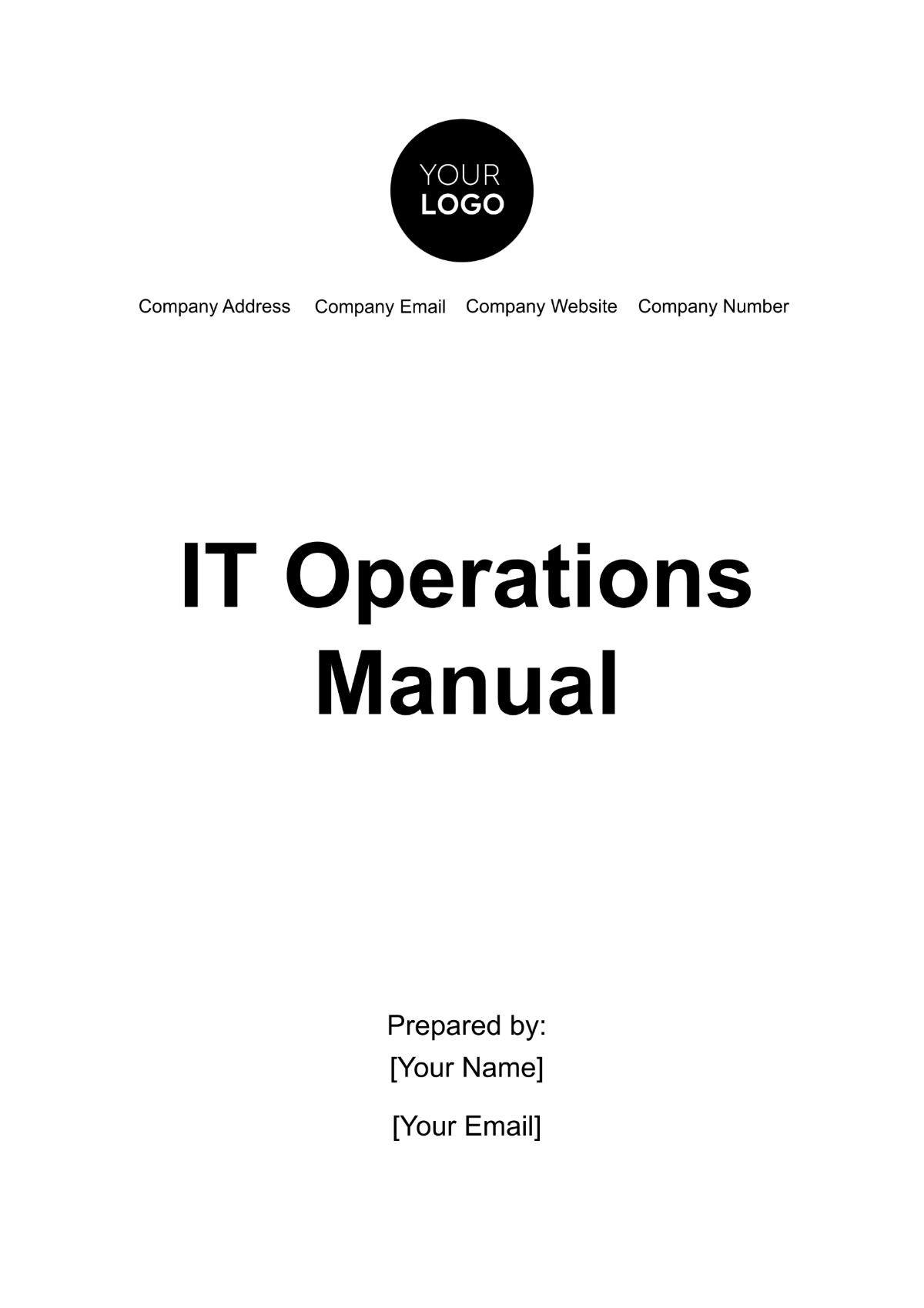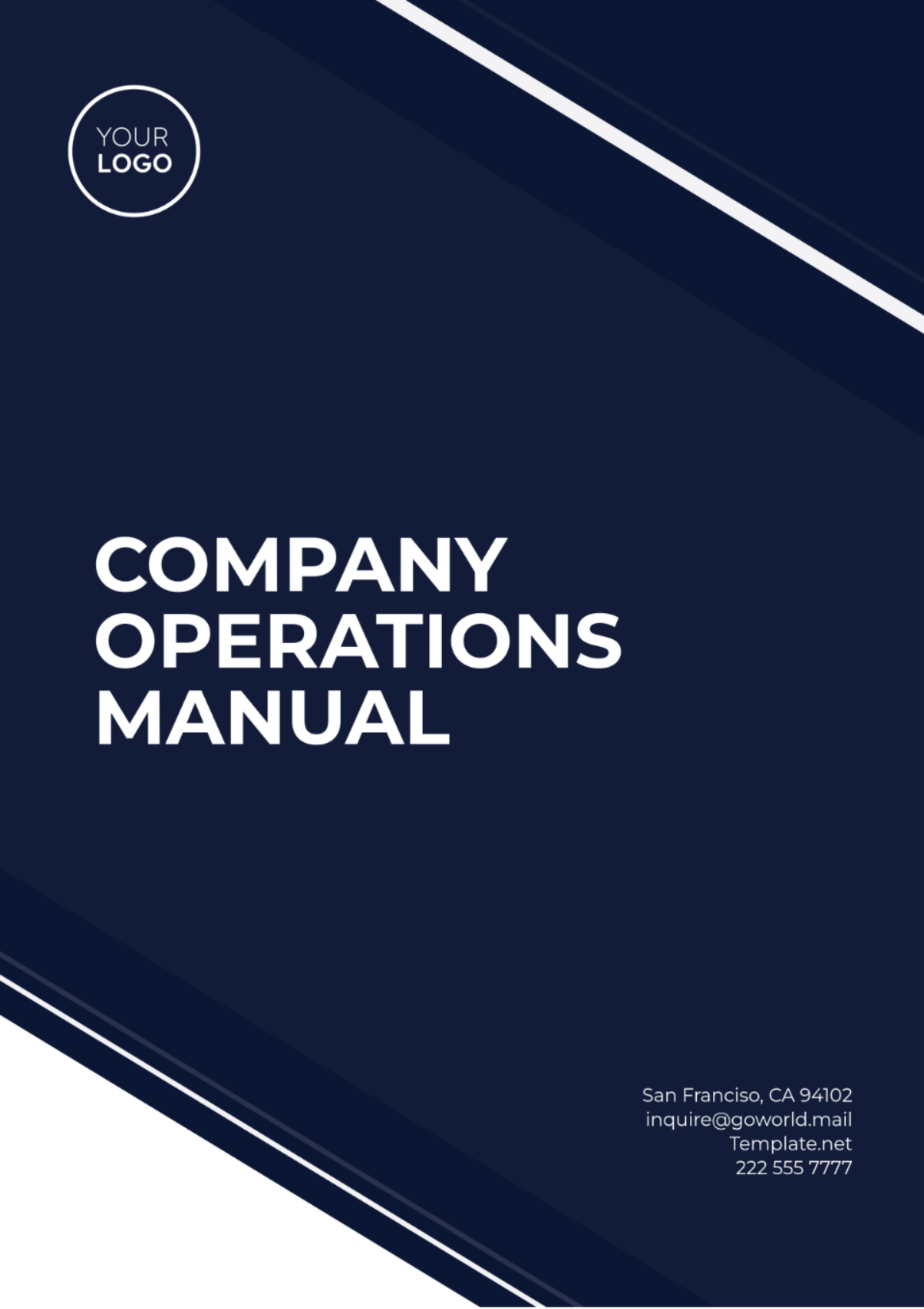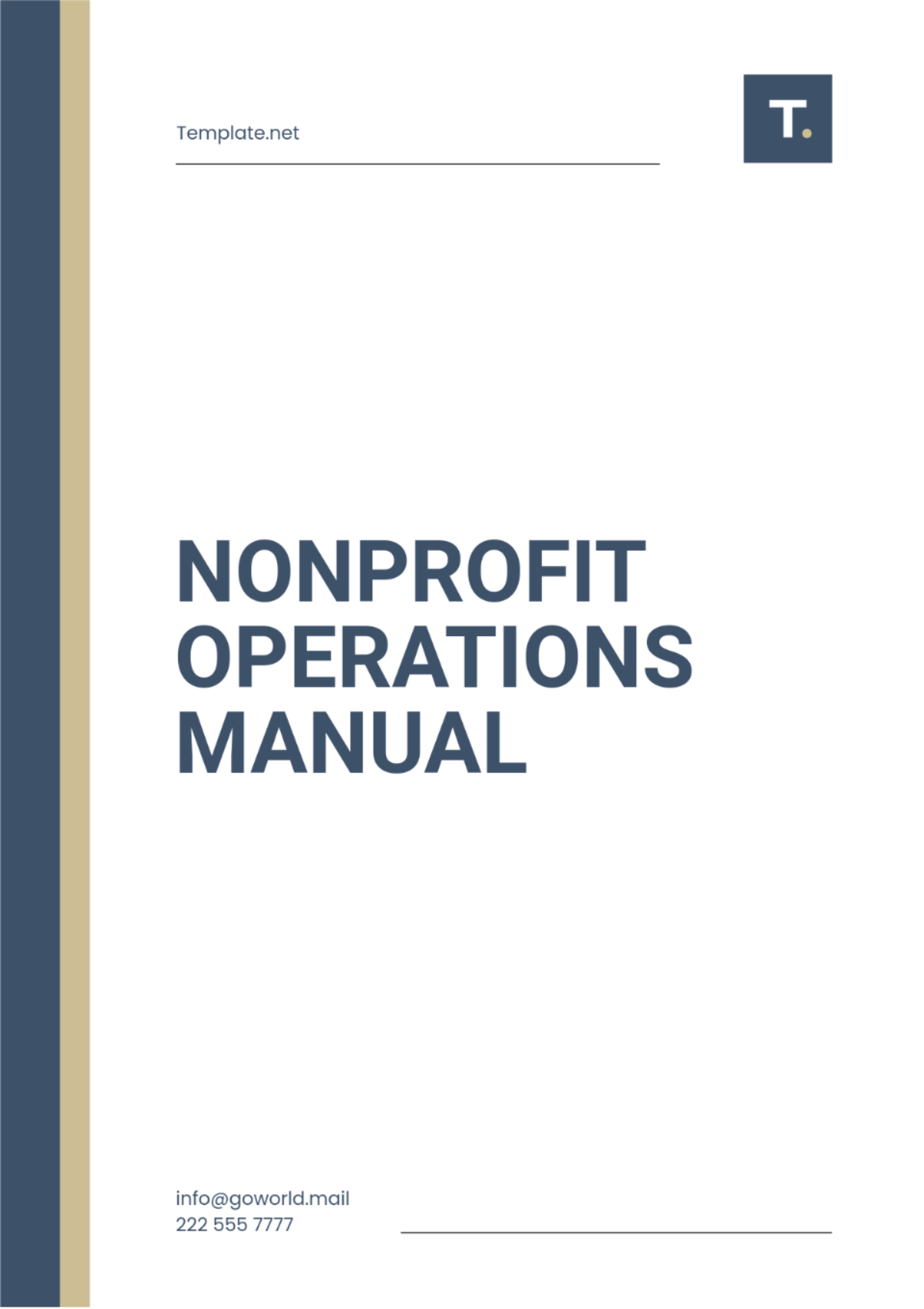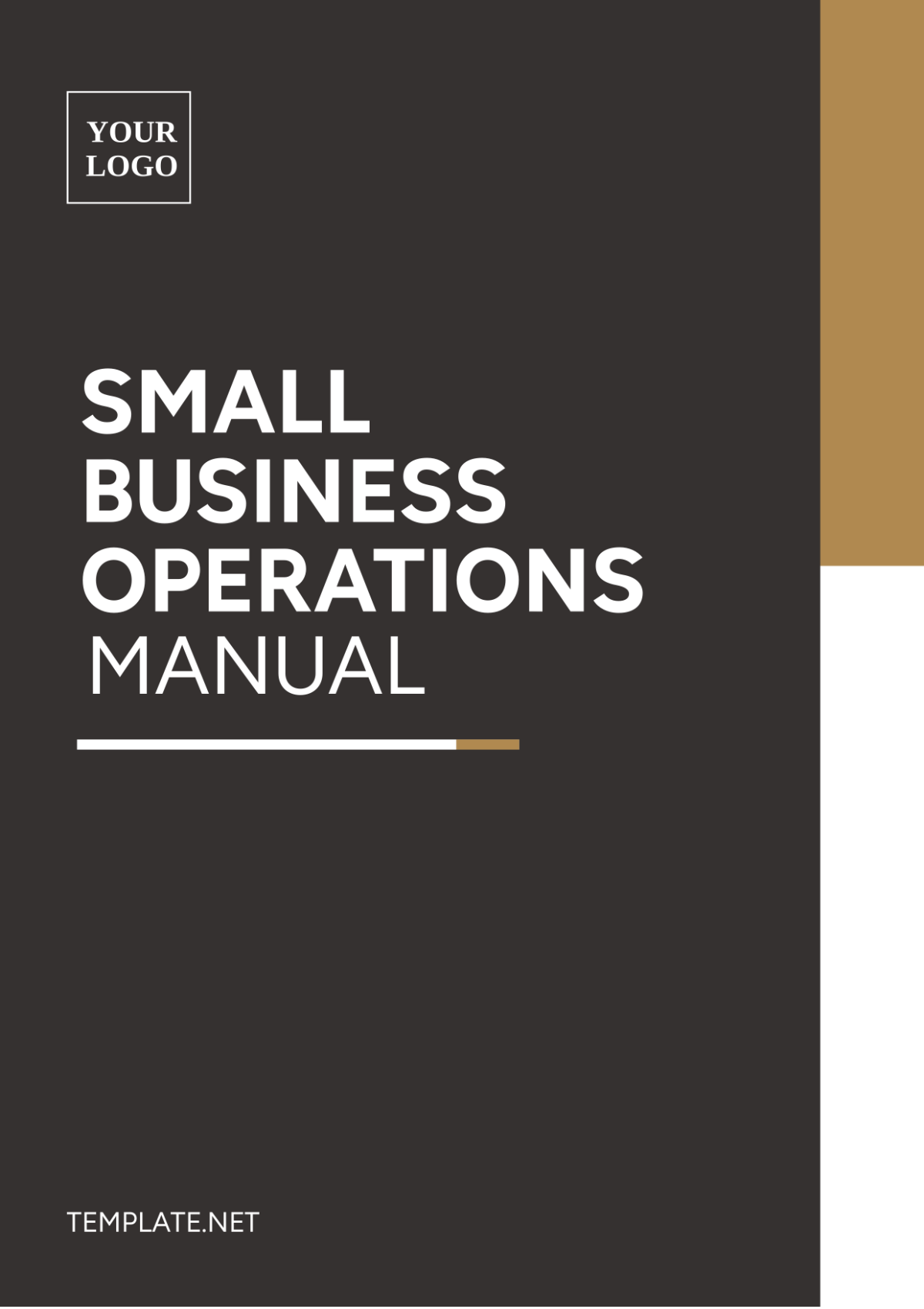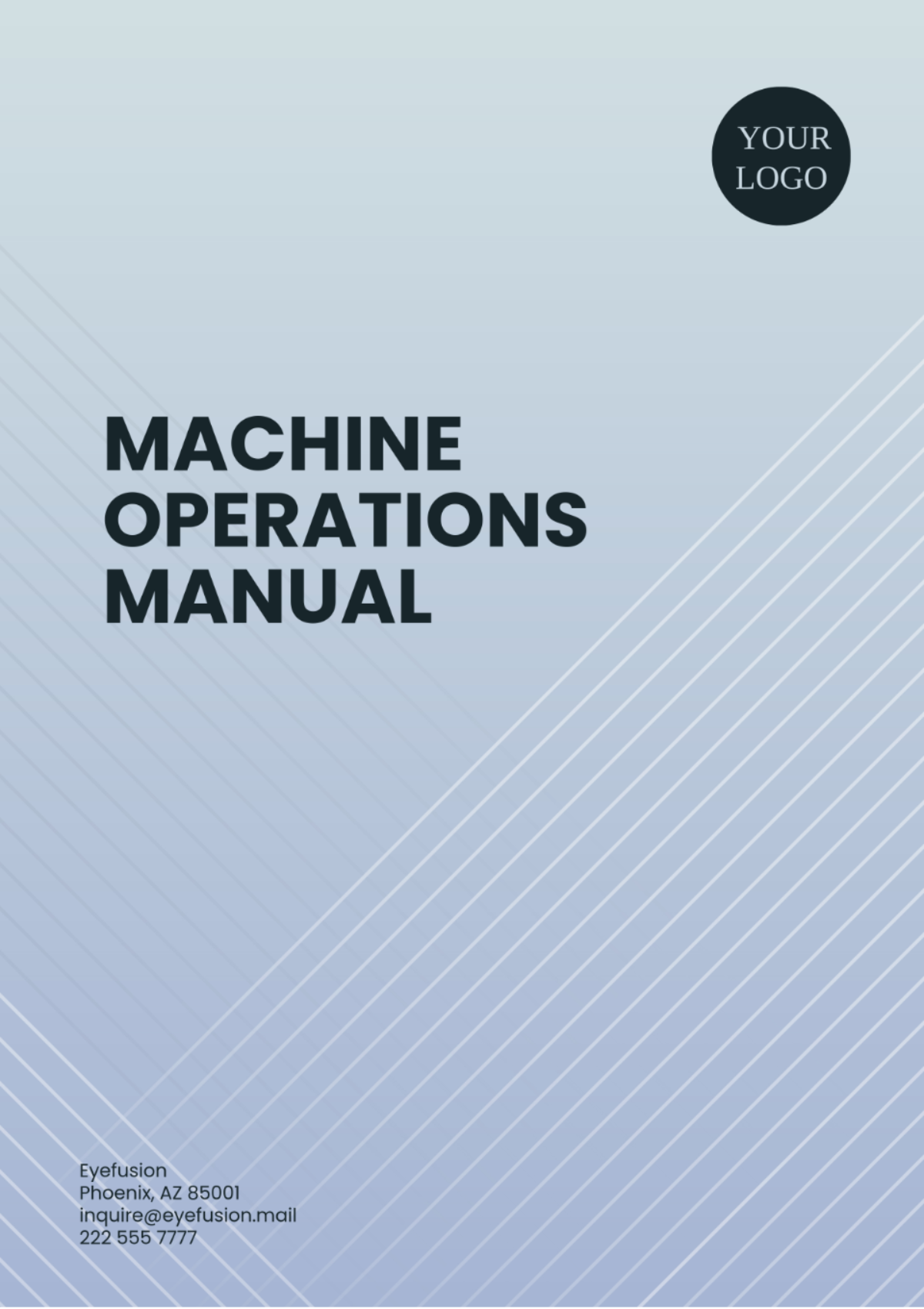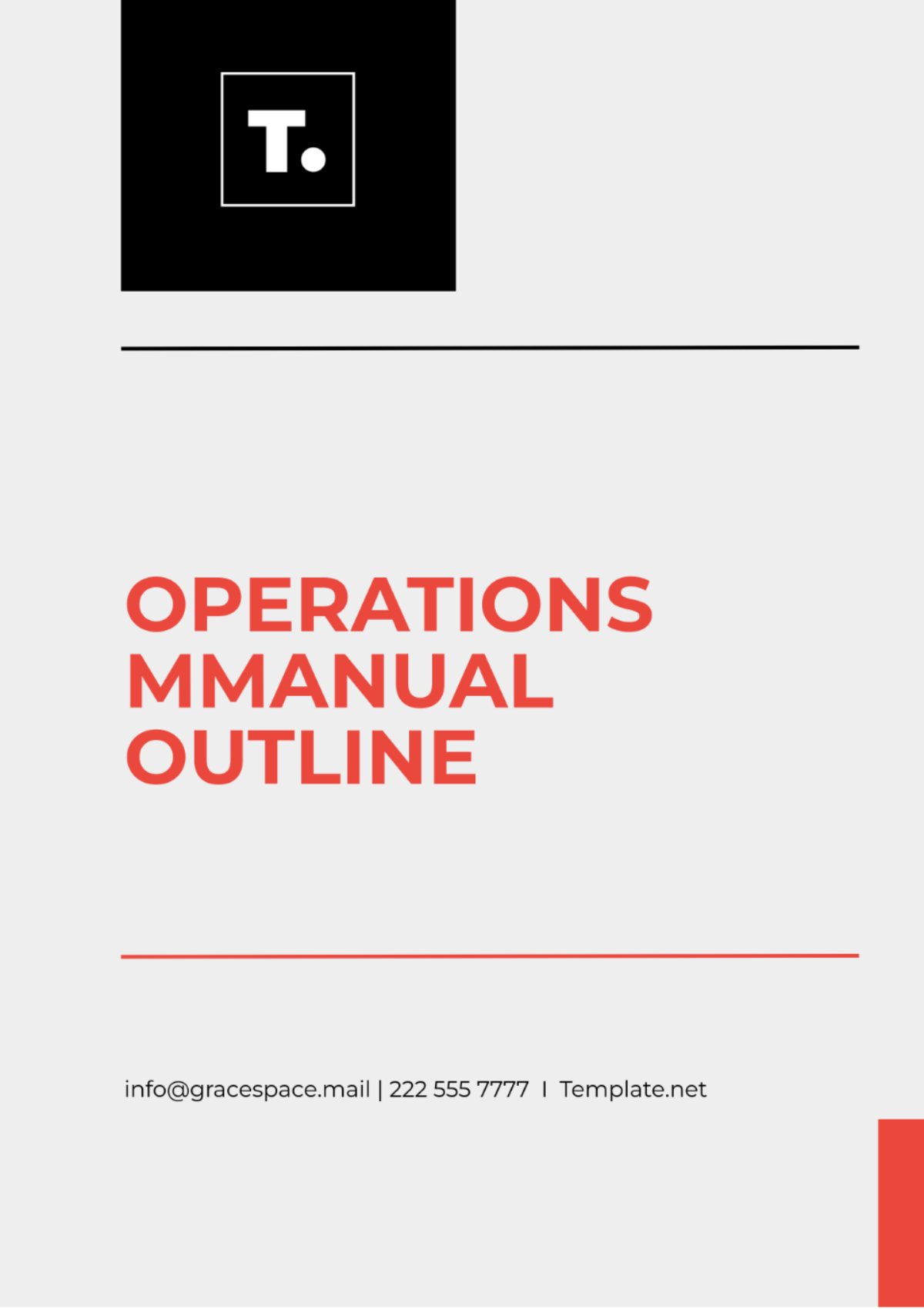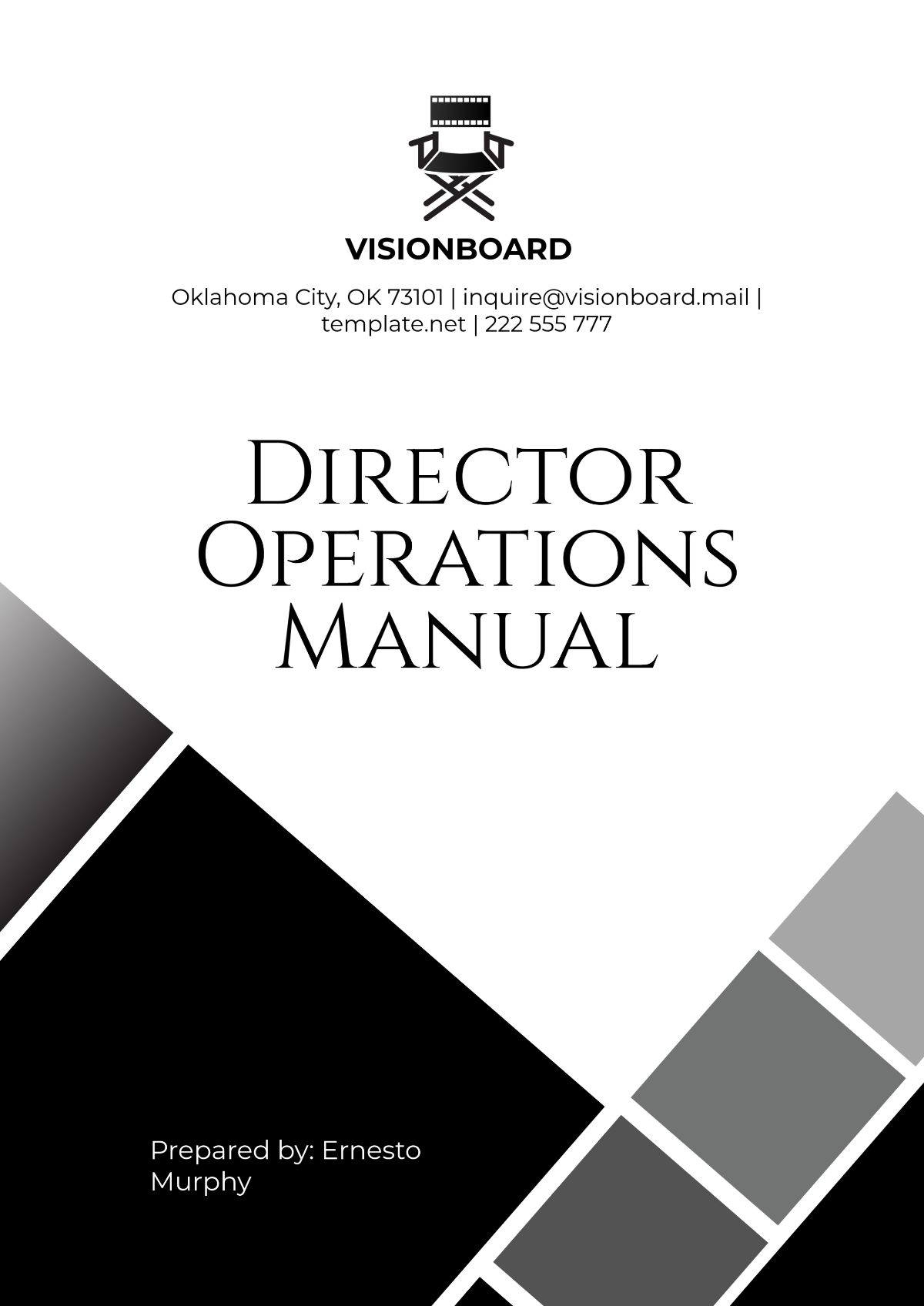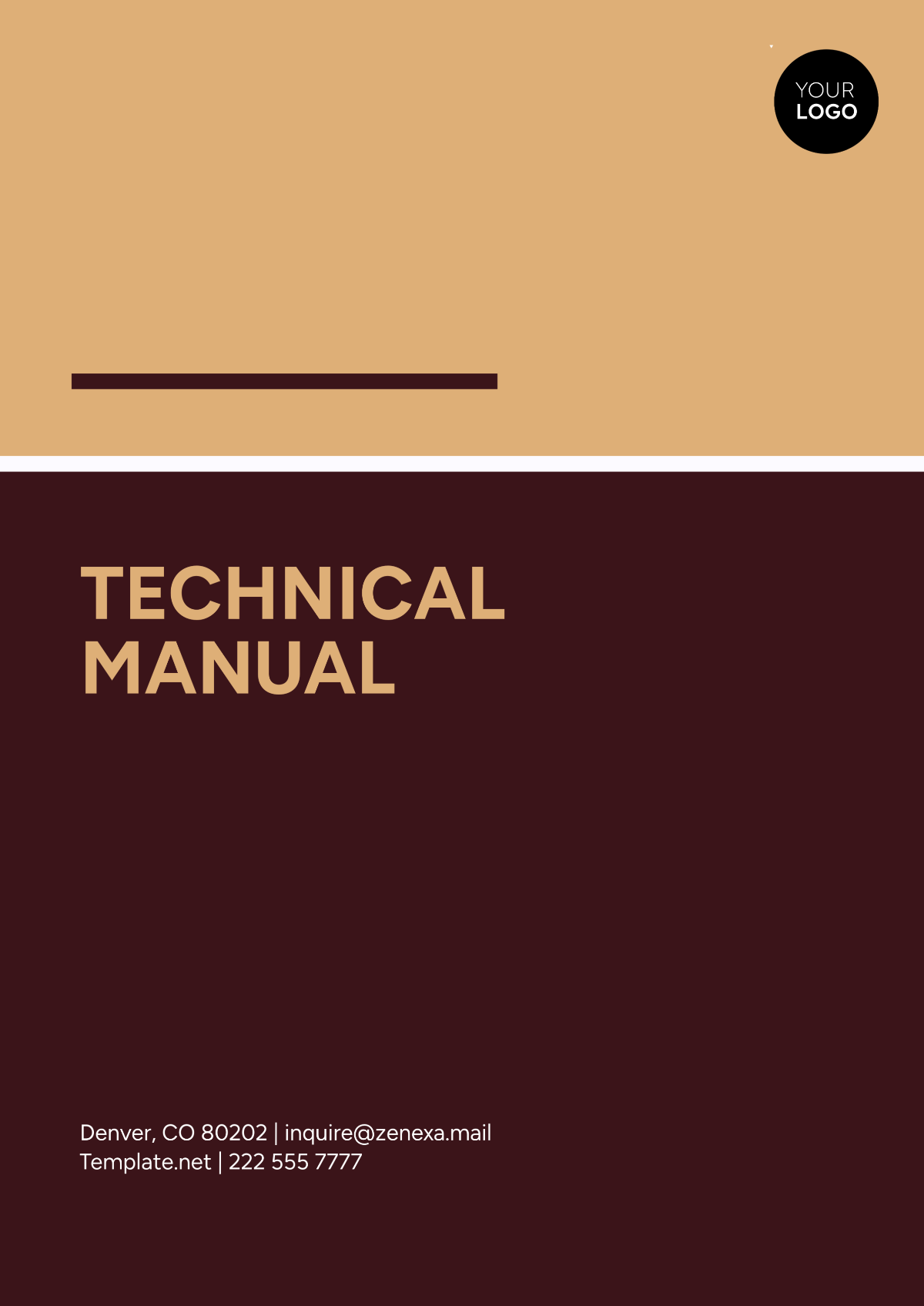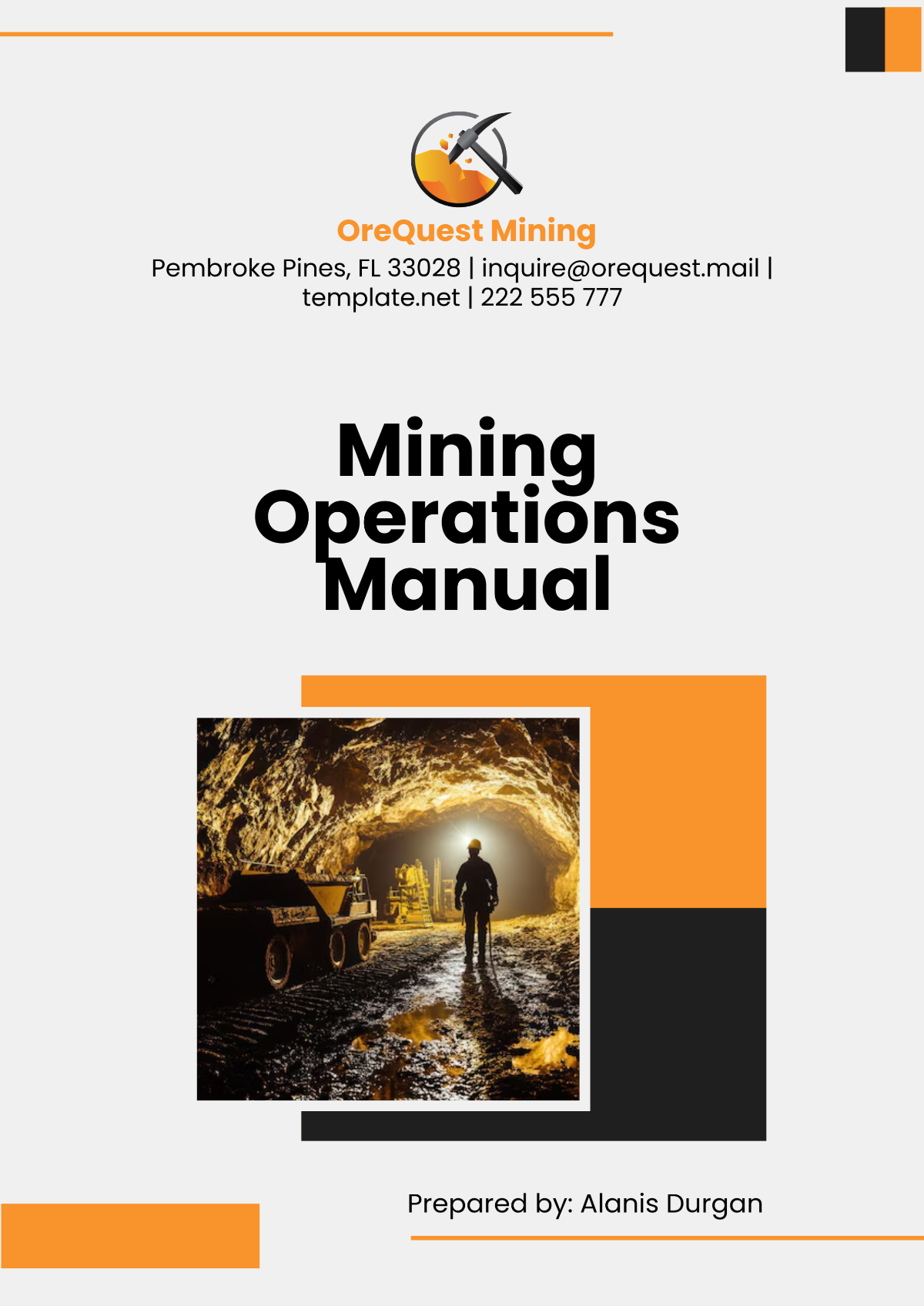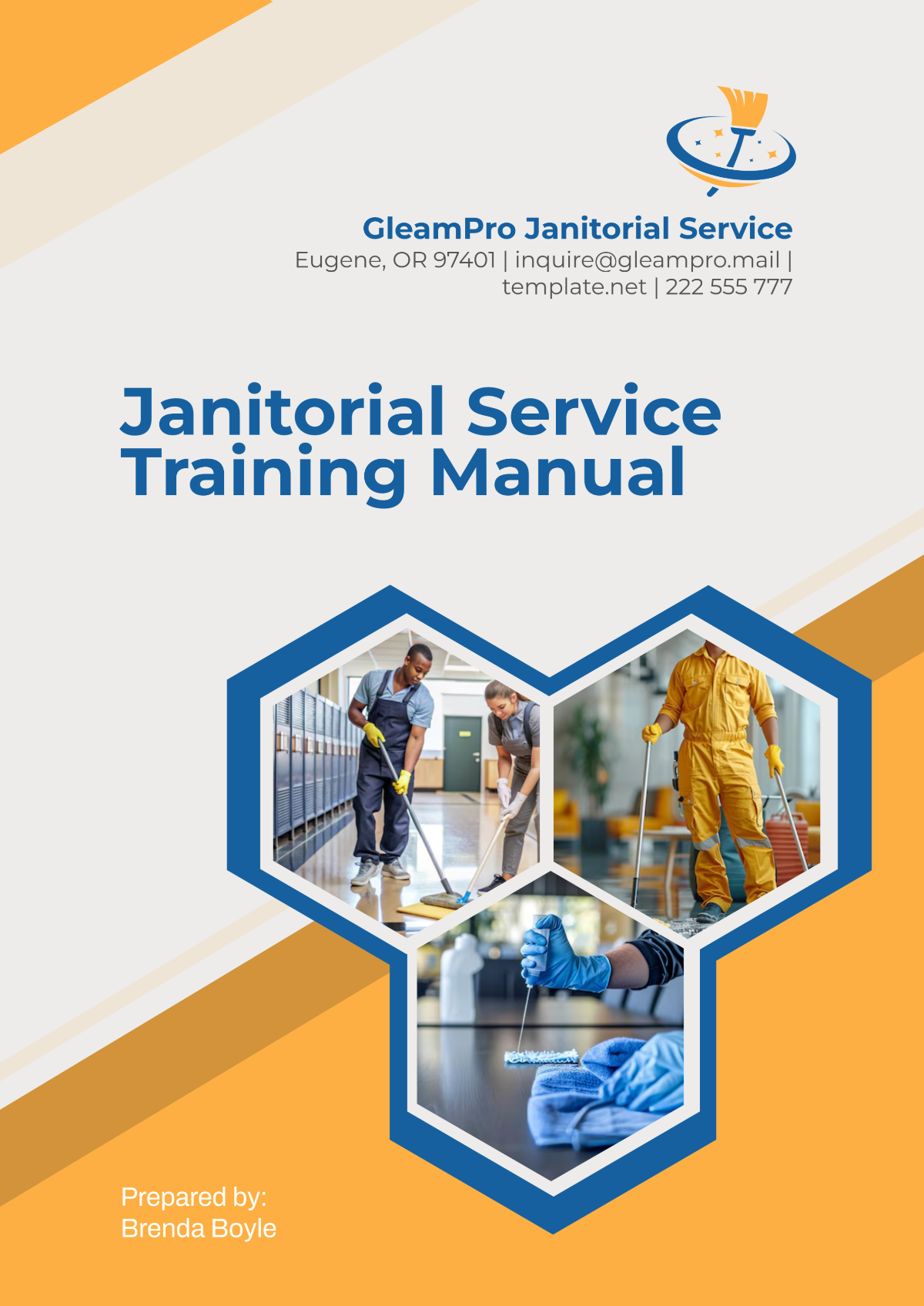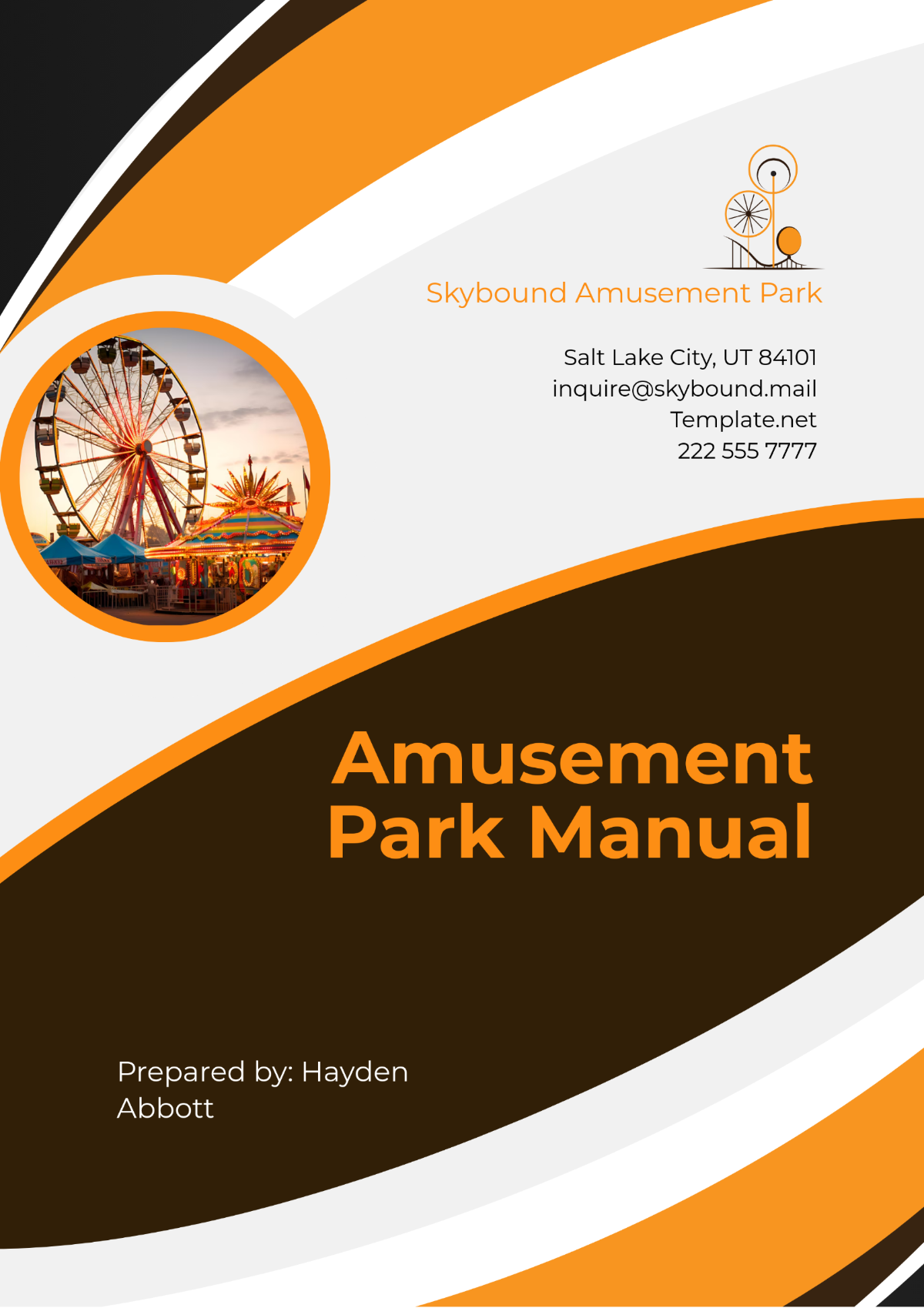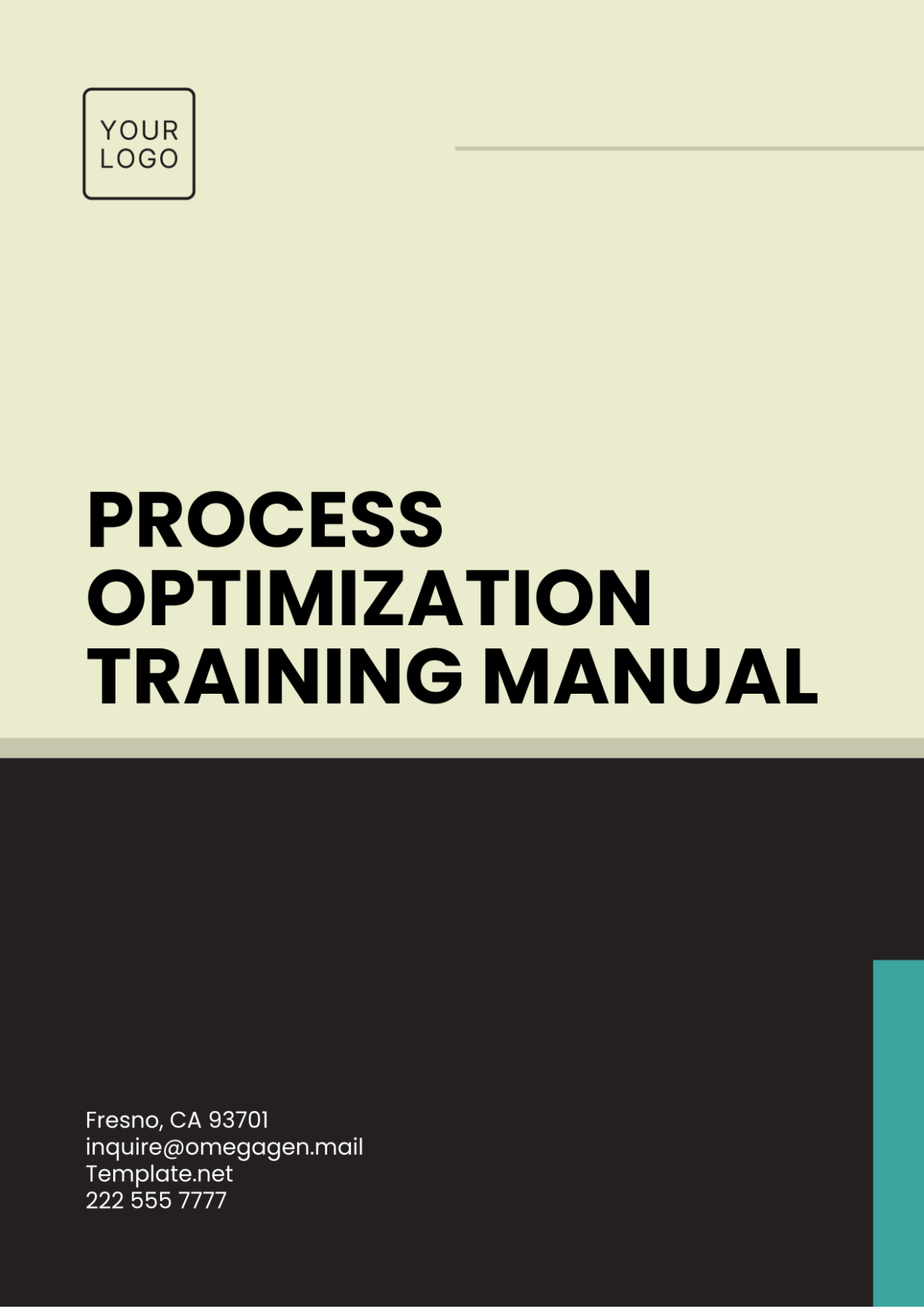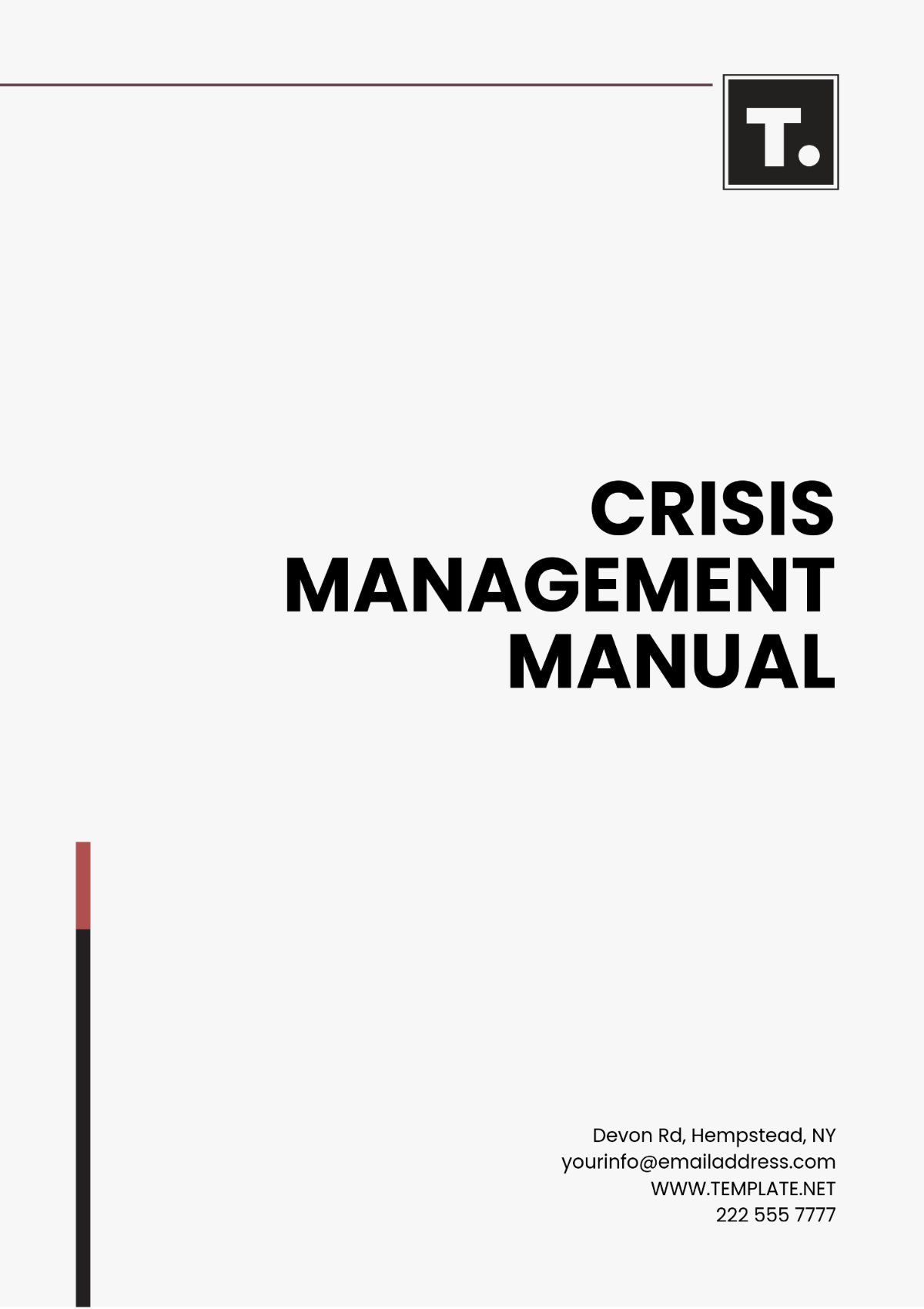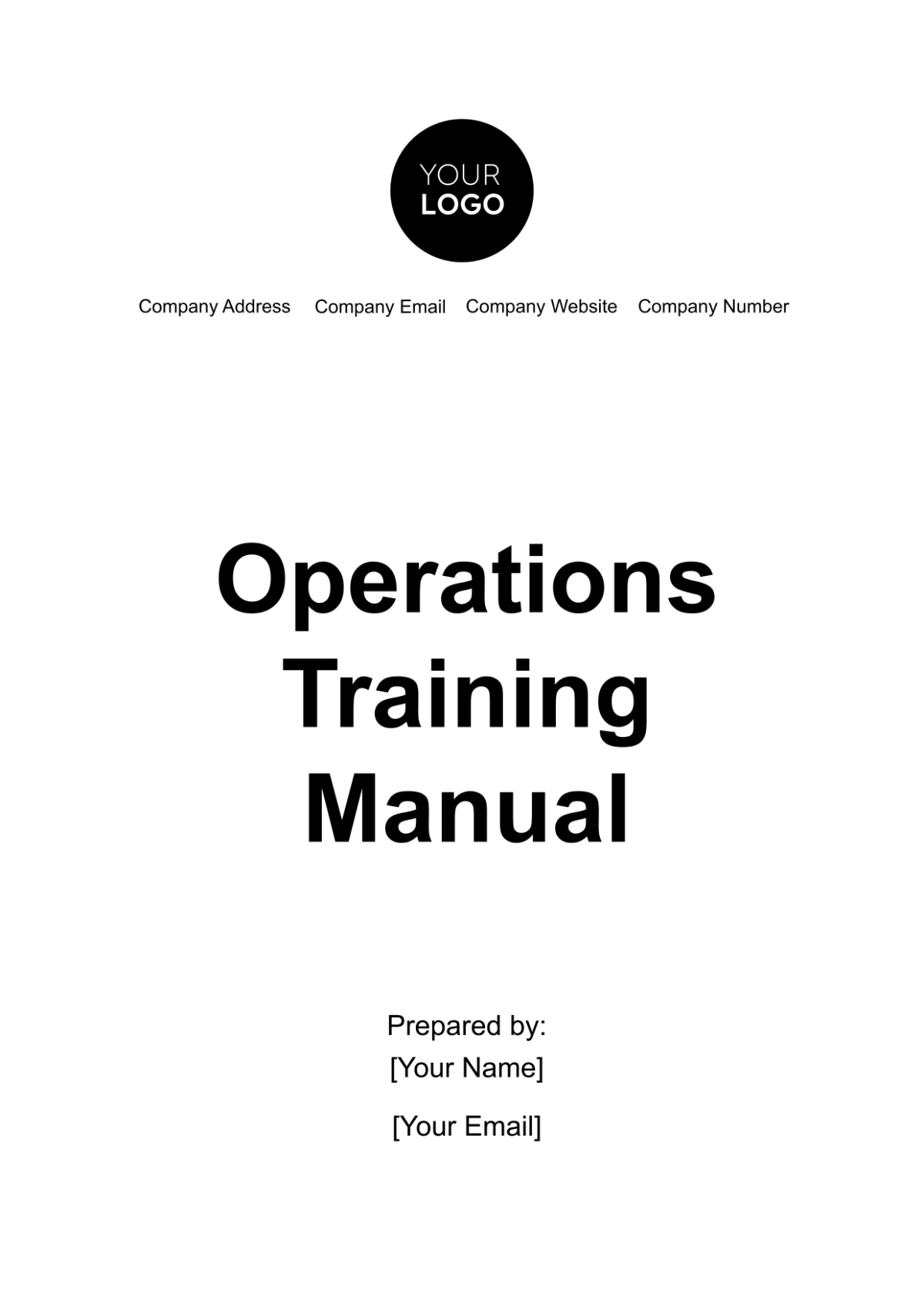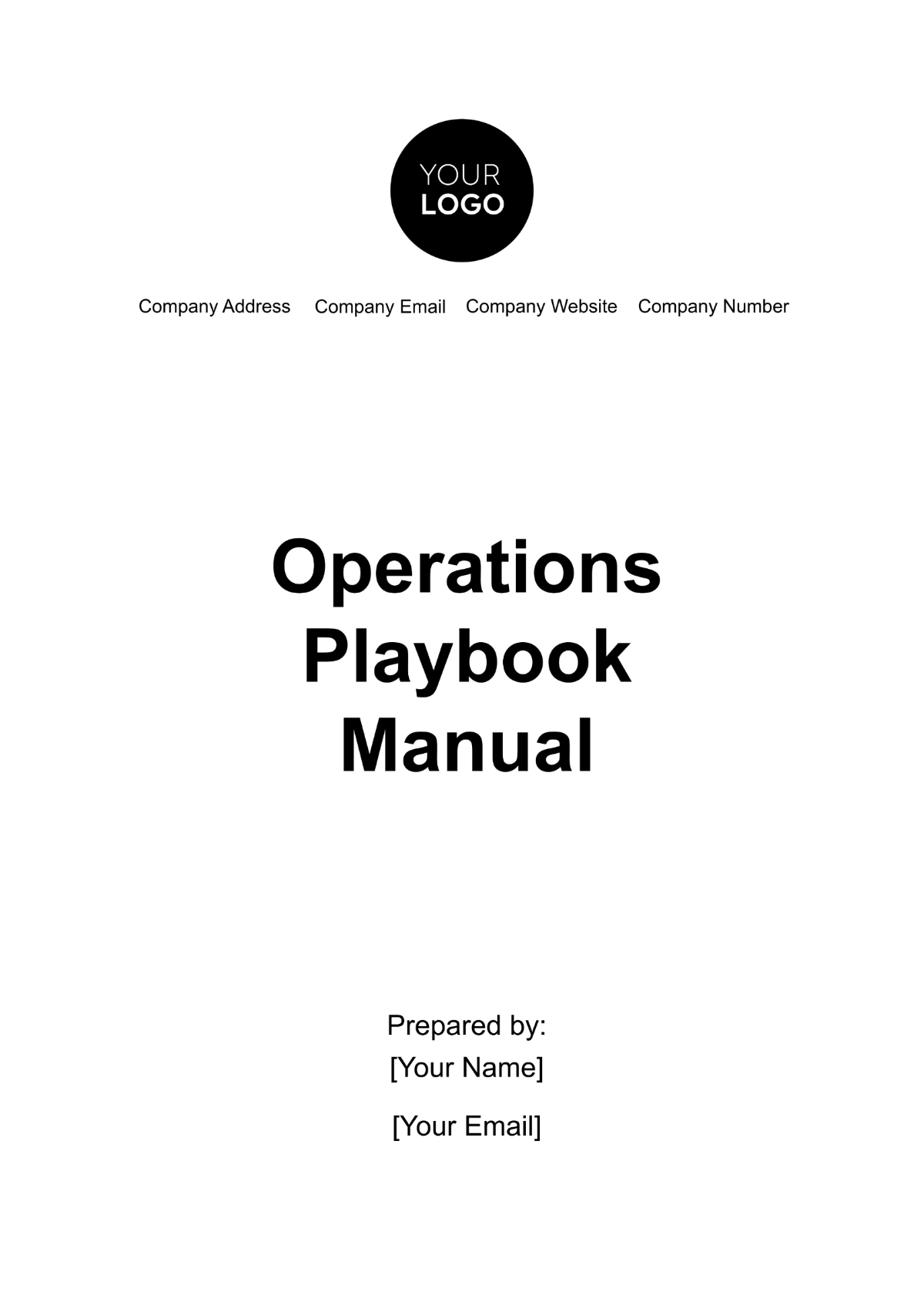Operations Maintenance Manual
I. Introduction
The Operations Maintenance Manual for [Your Company Name] outlines the procedures and schedules required to ensure the smooth and effective maintenance of all operational machinery. The maintenance of equipment is critical for uninterrupted operations, safety, and efficiency. This manual is designed to provide clear instructions on regular maintenance tasks, ensuring the longevity of machinery and minimizing downtime due to mechanical failures.
II. Purpose of Maintenance Program
The Maintenance Program is essential for ensuring that all operational machinery within [Your Company Name] functions efficiently and consistently. By implementing a structured maintenance schedule and clearly defined roles, the program aims to minimize downtime, extend the life of equipment, and ensure the safety of all employees.
A. Minimize Downtime
The logistics industry heavily relies on the continuous operation of equipment and machinery to meet customer demands. Downtime caused by machinery failure or delays in repairs can lead to significant losses, both financially and in terms of customer satisfaction.
Preventive Maintenance: A well-structured preventive maintenance schedule allows for the identification and rectification of potential problems before they escalate, ensuring that equipment remains operational.
Scheduled Downtime for Repairs: Planned maintenance periods are built into the program, allowing repairs and servicing to occur without causing unnecessary disruption to daily operations.
Rapid Response to Failures: The maintenance program is designed to allow for swift identification and repair of any unexpected failures, minimizing their impact on the overall workflow.
Improved Equipment Availability: The goal is to maximize the availability of machinery by keeping it in optimal condition through regular check-ups and proactive repairs.
B. Extend Equipment Lifespan
Machinery is a significant investment for any logistics company, and [Your Company Name] is no exception. One of the key goals of the maintenance program is to extend the useful life of equipment, thereby reducing the frequency and cost of new machinery purchases. Prolonging the lifespan of equipment results in long-term financial savings and higher operational stability.
Reduced Wear and Tear: Through routine lubrication, cleaning, and part replacements, the program helps reduce the wear and tear that machinery endures during daily operations.
Maximizing Investment: The maintenance program ensures that the company gets the maximum return on its machinery investments by keeping equipment functional for as long as possible.
Deferring Replacement Costs: By maintaining equipment in good condition, the company can defer the need to purchase costly replacements, thus allowing better allocation of capital resources to other areas of the business.
Enhanced Productivity: Well-maintained equipment operates more efficiently, consuming less energy and requiring fewer repairs, which contributes to overall productivity improvements.
C. Ensure Safety
Employee safety is a top priority at [Your Company Name], and well-maintained machinery plays a vital role in ensuring a safe work environment. Faulty or malfunctioning equipment can lead to accidents, injuries, or even fatalities. The maintenance program aims to prevent safety hazards by addressing equipment issues before they compromise workplace safety.
Compliance with Safety Standards: Regular inspections and servicing help ensure that all machinery meets industry safety standards and regulations, reducing the risk of accidents.
Hazard Prevention: By identifying and repairing mechanical issues early, the program helps prevent hazardous conditions that could put employees at risk.
Employee Training: The program includes educating operators and maintenance staff on the safe operation and upkeep of equipment, reinforcing safety as a priority.
Accident Reduction: By keeping machinery in proper working condition, the likelihood of accidents caused by equipment failure is significantly reduced, leading to a safer workplace for all.
D. Optimize Operational Efficiency
The maintenance program is crucial for maintaining operational efficiency. Efficient machinery ensures that logistics operations run smoothly, contributing to faster turnaround times, higher throughput, and improved customer satisfaction. Equipment that is regularly serviced runs more efficiently, resulting in reduced energy consumption and less operational waste.
Improved Performance: Regular maintenance ensures that machinery operates at peak performance, enabling the company to meet deadlines and maintain the quality of its logistics services.
Reduced Energy Usage: Well-maintained machinery is more energy-efficient, helping to reduce overall operating costs and the company's environmental footprint.
Faster Repair Turnaround: The program includes protocols for identifying and addressing minor issues before they escalate, reducing the time needed for repairs.
Enhanced Productivity: Operational machinery that is functioning at its best capacity allows staff to work more effectively, boosting productivity across all logistics operations.
III. Maintenance Roles and Responsibilities
In order for the maintenance program to run effectively, it is critical that each team member understands their specific role and responsibility in the maintenance process. This clarity ensures accountability, consistency in task execution, and that no area of machinery upkeep is overlooked.
A. Operations Manager
The Operations Manager holds a central role in the maintenance framework. Their primary responsibility is to oversee the entire maintenance program and ensure that it is executed according to schedule and within the allocated budget. They act as a bridge between upper management, the maintenance team, and any external service providers.
Task Scheduling and Prioritization: The Operations Manager is responsible for creating and maintaining the master maintenance schedule. They must ensure that each piece of equipment is serviced in a timely manner and that priority is given to machinery showing signs of potential failure or wear.
Resource Allocation: This includes budgeting for maintenance activities, allocating labor resources, and ensuring the necessary tools and parts are available when needed.
Vendor Coordination: In cases where specialized repairs are required, the Operations Manager will coordinate with external vendors or service providers to ensure the work is completed on time and to company standards.
Reporting and Compliance: The manager is also responsible for reporting maintenance activities to senior leadership and ensuring that all procedures comply with industry standards and safety regulations.
B. Maintenance Team
The Maintenance Team is the backbone of the daily execution of the maintenance program. Comprised of skilled technicians, this team is tasked with performing routine preventive maintenance, handling repairs, and troubleshooting issues as they arise. Their expertise ensures that all operational machinery remains in peak condition.
Routine Maintenance: The Maintenance Team follows the preventive maintenance schedule, which includes tasks such as oil changes, part replacements, and system diagnostics. Regular check-ups help prevent sudden breakdowns and maintain operational efficiency.
Troubleshooting and Repairs: In the event of a machinery malfunction or failure, the team is responsible for diagnosing the issue and performing necessary repairs. If they cannot handle the problem internally, they collaborate with the Operations Manager to bring in external support.
Equipment Performance Monitoring: The team monitors equipment performance metrics to spot any anomalies or potential areas for concern. This proactive approach helps address problems before they escalate.
Maintenance Documentation: Every task performed by the team must be logged in detailed maintenance records, noting any repairs, inspections, or parts replacements. This documentation is crucial for performance evaluation and compliance tracking.
C. Equipment Operators
Equipment Operators are directly responsible for the day-to-day use of machinery and therefore play a crucial role in the first line of defense against equipment failures. Their familiarity with the equipment enables them to identify minor issues before they become major problems.
Daily Equipment Inspections: Before each shift, operators are required to conduct a visual inspection of the machinery they will be using. This includes checking for signs of wear, verifying fluid levels, and ensuring the equipment powers on and operates as expected.
Operational Safety: Operators must ensure that machinery is used in accordance with manufacturer guidelines and company safety standards. This prevents undue strain on the equipment and reduces the risk of accidents.
Reporting Malfunctions: Operators must immediately report any mechanical issues or unusual performance characteristics to the Maintenance Team, allowing for prompt repairs.
Basic Maintenance Tasks: Operators are often responsible for minor upkeep tasks, such as lubricating parts or replacing consumable items like filters, ensuring that equipment remains in working order between formal maintenance intervals.
D. External Service Providers
While much of the maintenance work is performed internally, there are occasions where external service providers are brought in for specialized repairs, advanced diagnostics, or routine servicing of complex equipment. Their involvement ensures that highly technical repairs are handled by experts.
Specialized Repairs: Certain equipment, such as automated sorting machines or HVAC systems, may require specialized knowledge or tools that the in-house team does not possess. External providers are responsible for carrying out these advanced repairs.
Regular Servicing Contracts: For complex machinery, [Your Company Name] may have maintenance contracts with external vendors who provide scheduled servicing and diagnostics. This allows the company to maintain high-end equipment without overburdening the internal maintenance team.
Compliance and Certification: External providers ensure that any repairs or modifications to machinery meet industry and safety standards. They also supply necessary certifications to prove that equipment is in compliance with regulations.
IV. General Maintenance Procedures
All machinery used in the logistics operations of [Your Company Name] must undergo regular maintenance to ensure efficiency and reliability. The following general procedures must be followed:
Daily Inspections: Equipment operators should conduct a basic inspection of operational machinery before starting their shifts. This includes checking fluid levels, visual inspection of parts, and ensuring that the equipment starts and functions properly.
Routine Preventive Maintenance: Scheduled tasks include lubrication, filter replacements, and system diagnostics, depending on the equipment type. These should be carried out at intervals according to the maintenance schedule.
Repairs: Any machinery malfunction that disrupts operations should be reported immediately to the maintenance team, who will evaluate whether repairs can be done in-house or if a specialist vendor is required.
Maintenance Documentation: A log should be maintained for each piece of equipment, recording maintenance activities, issues, and repairs. This helps track the history and plan for future maintenance needs.
V. Maintenance Schedule
The following table outlines the regular maintenance schedule for the core machinery used in [Your Company Name]'s logistics operations. These tasks should be completed as per the outlined frequency to ensure optimal machine performance.
Machinery | Maintenance Task | Frequency | Responsible |
|---|---|---|---|
Forklifts | Check and top up hydraulic fluid, tire inspection, battery charge | Weekly | Maintenance Team |
Conveyor Systems | Belt alignment, motor lubrication, sensor check | Monthly | Maintenance Team |
Delivery Trucks | Engine oil change, brake inspection, tire rotation | Every 10,000 miles | External Vendor |
Pallet Jacks | Lubrication of wheels, visual inspection of parts | Quarterly | Maintenance Team |
Automated Sorting Machines | Software diagnostics, motor lubrication, sensor alignment | Bi-monthly | Maintenance Team |
HVAC Systems | Filter replacement, motor lubrication, duct inspection | Quarterly | External Vendor |
Generators | Fuel level check, battery inspection, load testing | Monthly | External Vendor |
Cranes and Hoists | Cable inspection, motor lubrication, safety mechanism testing | Quarterly | Maintenance Team |
The schedule above is designed to ensure that all operational machinery used in [Your Company Name]'s logistics operations is maintained regularly and systematically. By adhering to this schedule, the company can prevent costly repairs, avoid operational downtime, and extend the life of equipment. The combination of in-house maintenance and specialized external services ensures that all equipment is cared for adequately and within manufacturer guidelines.
VI. Safety Considerations
Proper maintenance plays a key role in ensuring the safety of employees and operational success. Maintenance procedures should always prioritize safety by following these key principles:
Lockout/Tagout Procedures: Ensure all machinery is powered off and tagged for service before starting maintenance tasks. This reduces the risk of injury.
Use of Protective Gear: Maintenance staff must wear appropriate personal protective equipment (PPE), such as gloves, helmets, and safety glasses, when working on machinery.
Training and Certifications: All employees involved in the maintenance of specialized equipment must undergo the required training and certifications before operating or repairing machinery.
VII. Performance Evaluation of Machinery
To ensure continuous improvement and operational success, it is crucial to regularly evaluate the performance of the machinery and the maintenance program. This section outlines the key performance indicators (KPIs) used to assess the condition of equipment:
Downtime Due to Malfunctions: Tracking how often machinery breaks down and the duration of downtime can help identify areas for improvement.
Cost of Maintenance: A comparison of routine maintenance costs versus repair expenses can help optimize the budget.
Equipment Efficiency: Metrics like fuel efficiency for trucks or energy consumption for conveyors should be tracked to identify declining performance.
A well-structured maintenance program is vital for the logistics operations at [Your Company Name]. Regular inspections, timely repairs, and adherence to the maintenance schedule will not only reduce downtime but also prolong the life of the equipment.
This manual serves as a guide to ensure operational efficiency, safety, and cost-effectiveness, allowing [Your Company Name] to deliver reliable services to its clients. By continually evaluating the effectiveness of the maintenance program, the company can make necessary adjustments to further optimize operations.

